Thank You for Dining with Me
As a 20-plus year resident of Norfolk, I’ve orbited the cycle of arriving as a stranger, ultimately meeting and knowing lots of folks from a variety of walks of life, being invited to house parties pretty regularly, and then once again becoming a relative stranger.
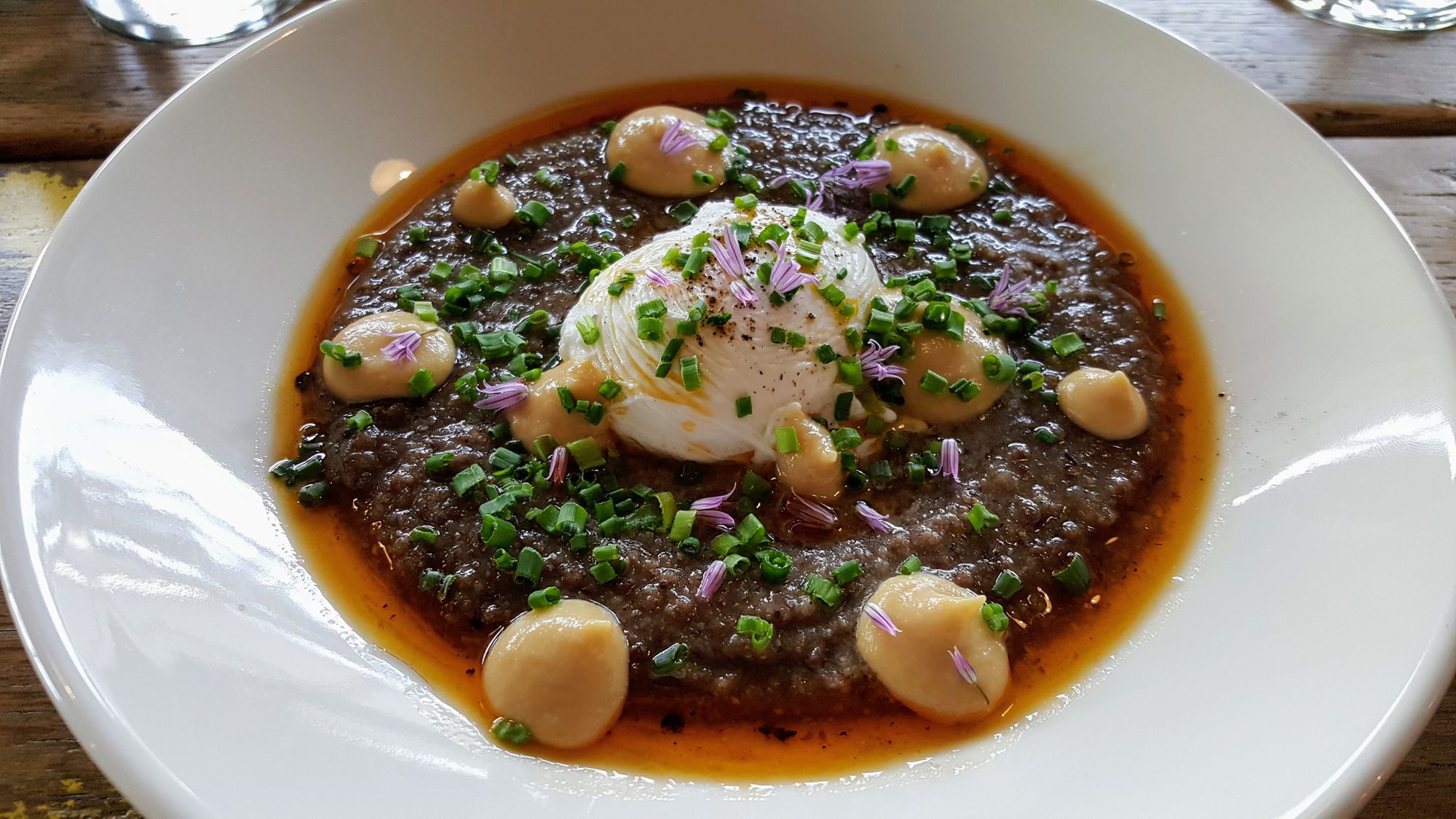
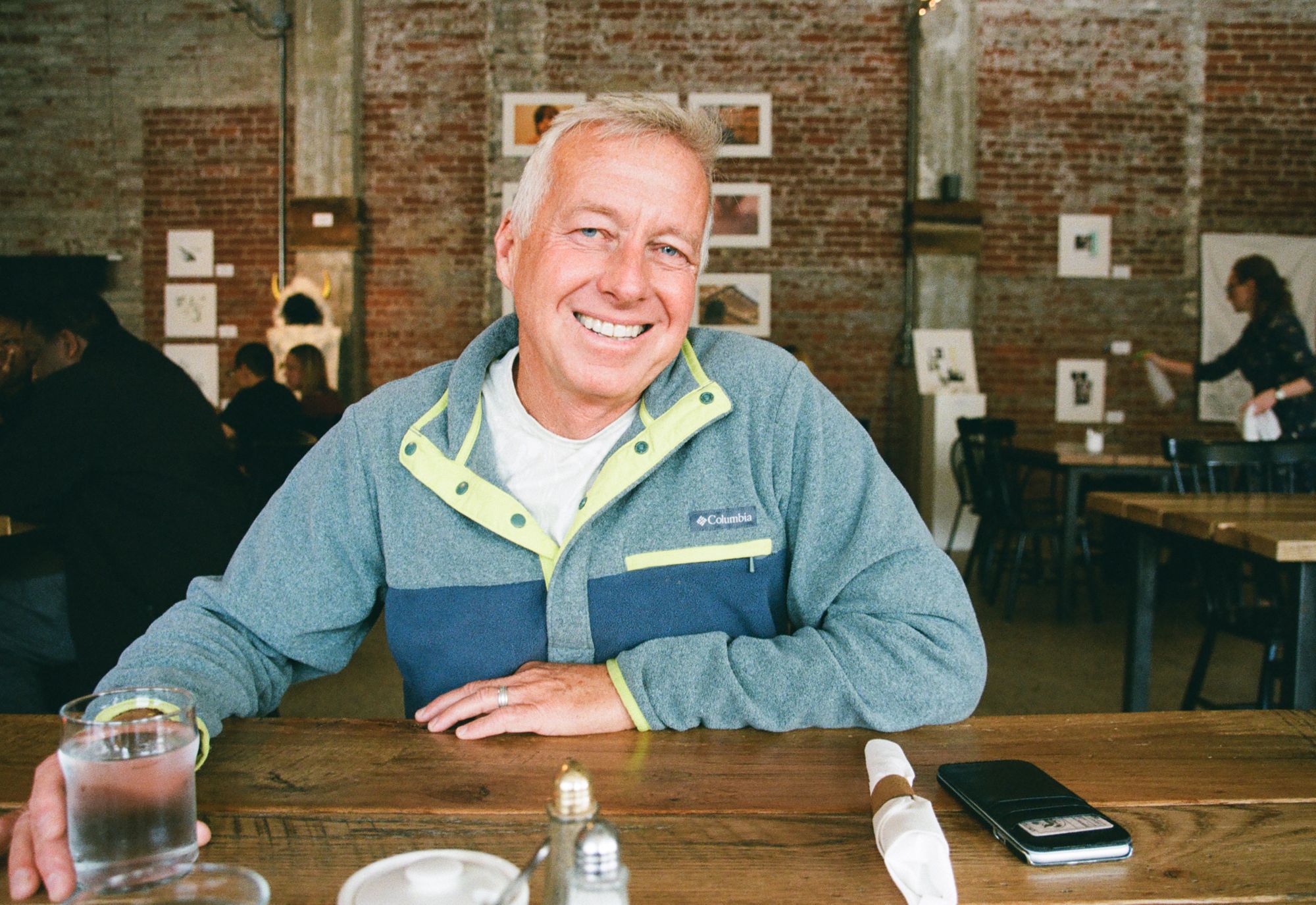
“Thank You for Dining with Me” began as a simpler and shorter project than it soon became.
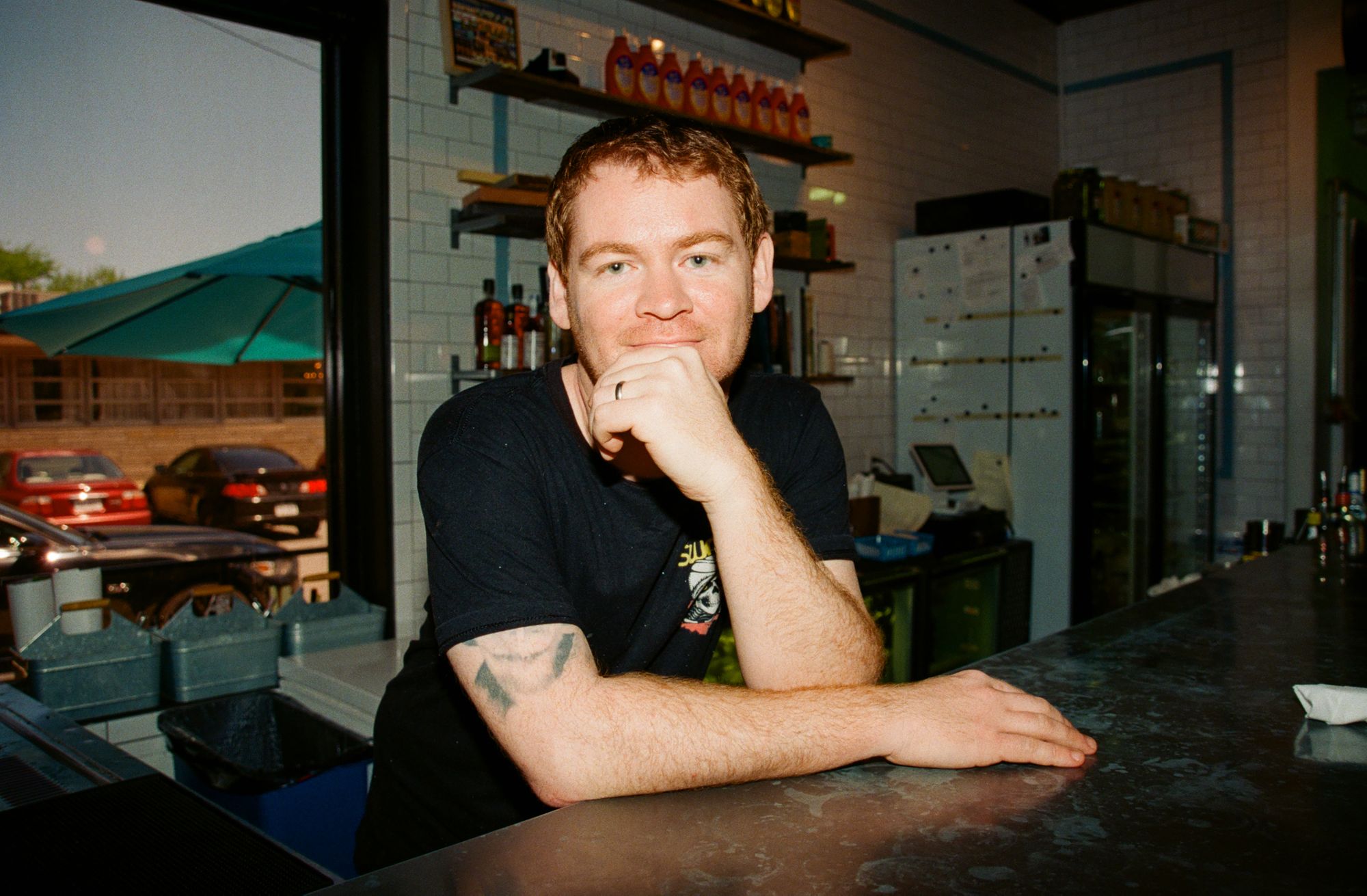
Much of the photography in which I’d generally engaged as a resident of Hampton Roads centered around public events and private parties, and to a lesser extent, travel elsewhere. However, I attend far fewer public events than I once did and, as a 20-plus year resident of Norfolk, I’ve orbited completely the cycle of arriving as a stranger, ultimately meeting and knowing lots of folks from a variety of walks of life, being invited to house parties pretty regularly, and then once again becoming a relative stranger.
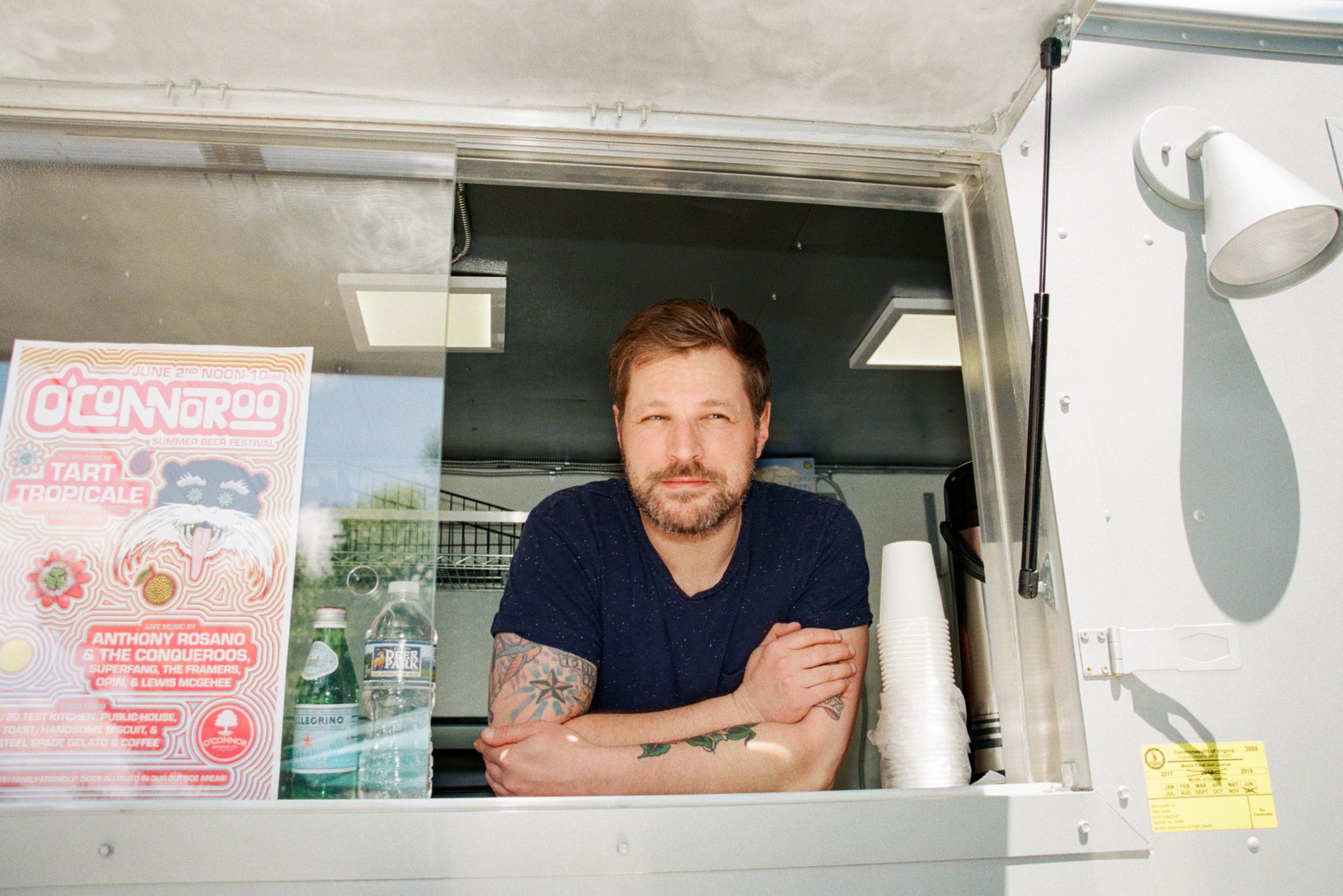
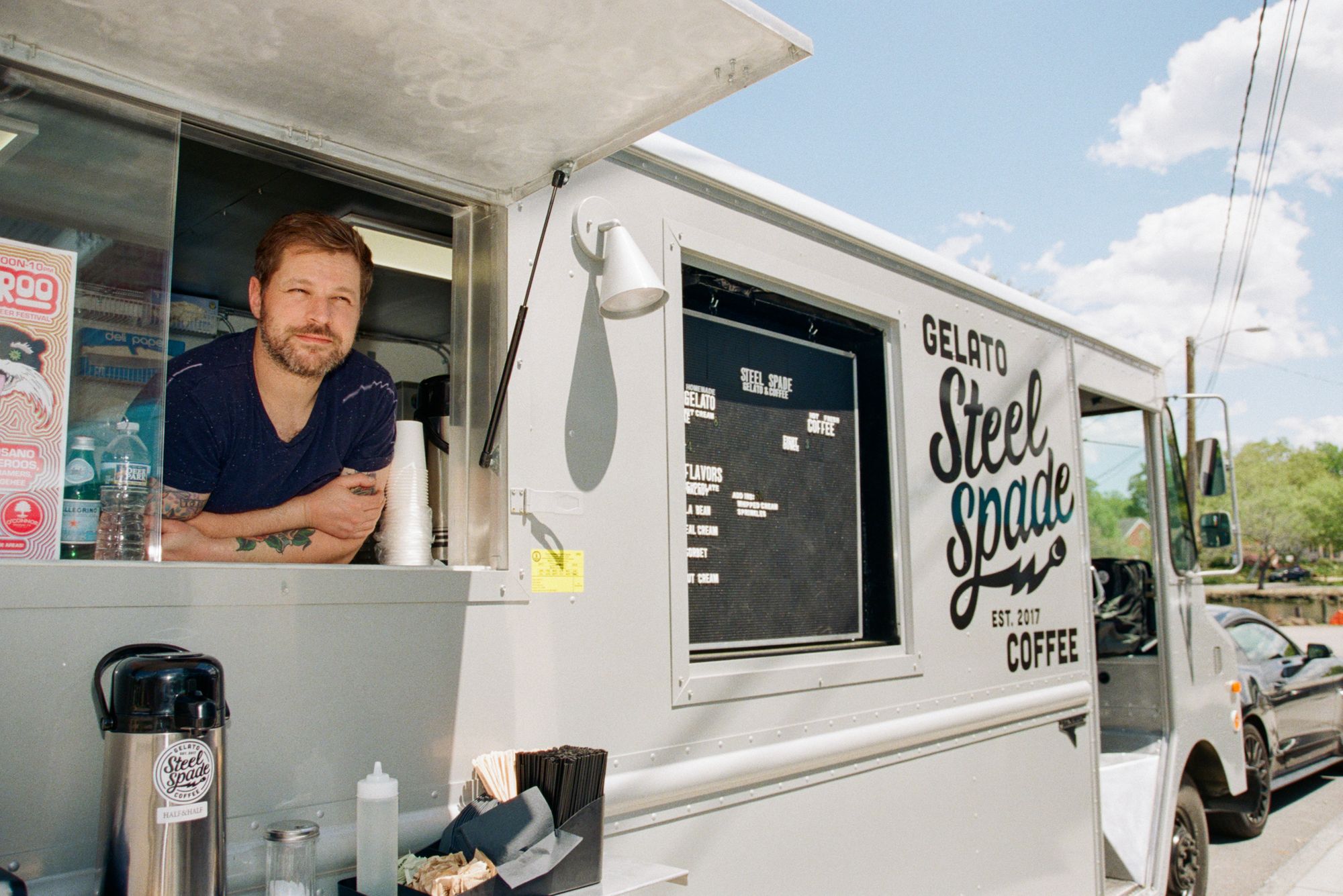
Years ago, a friend prone to a touch of good-natured hyperbole dubbed me the “mayor of Ghent,” which was amusing, if a tad (make that “a lot”) exaggerated, but to any extent there was truth to it, I left office several years ago.
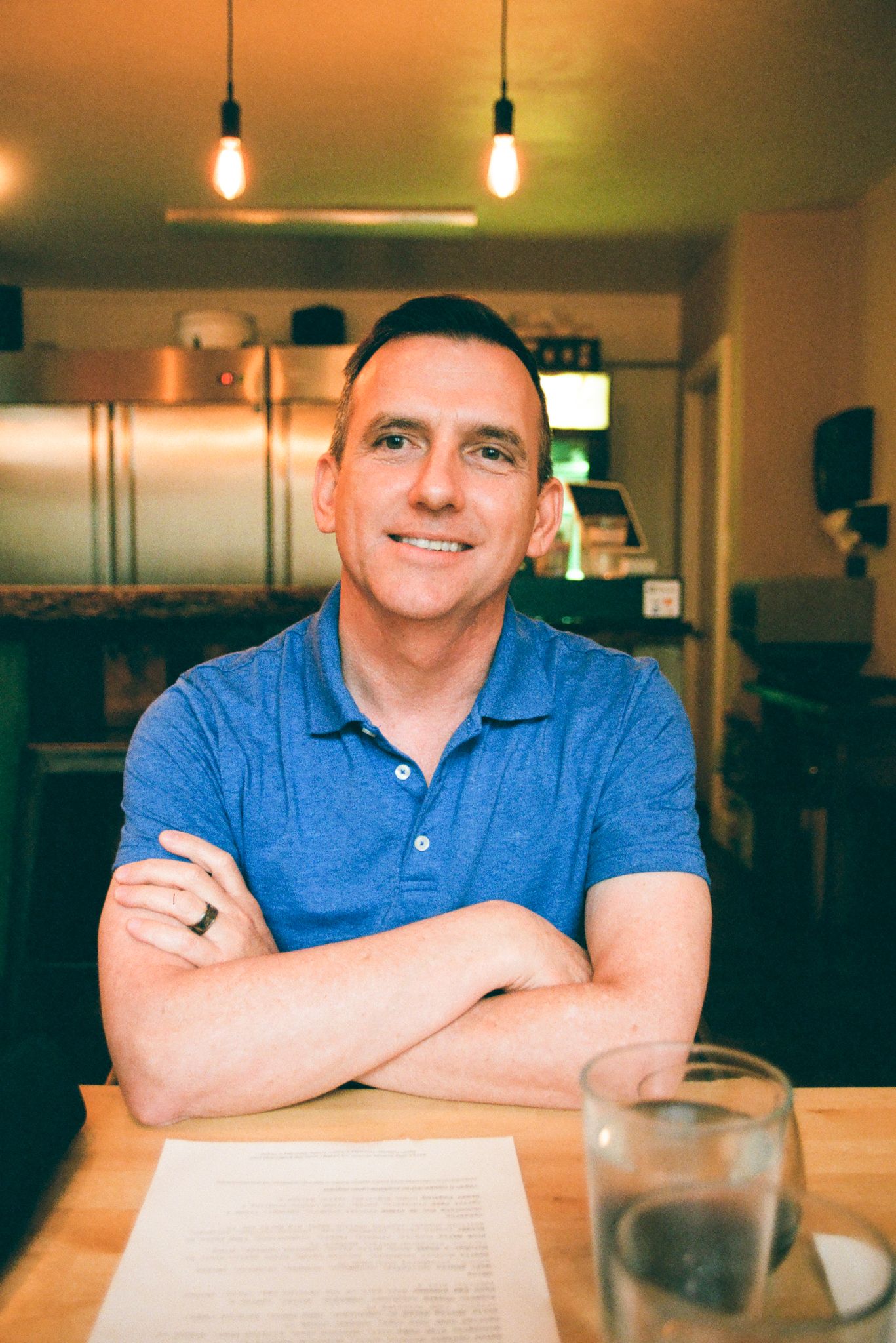
As I’ve said to a handful of people, including a couple of whom who’ve found the concept personally resonant, “it’s strange to become a stranger in a place you haven’t left.” But as folks I knew, socialized with, and adored left the area to pursue education or jobs elsewhere; departed Hampton Roads just as they’d arrived (because the Navy told them to); got into relationships or had children; aged out of late-night excursions at clubs and bars; or simply fell in love with new interests and hobbies that prompted them to allocate their time differently, that is indeed what I found had transpired.
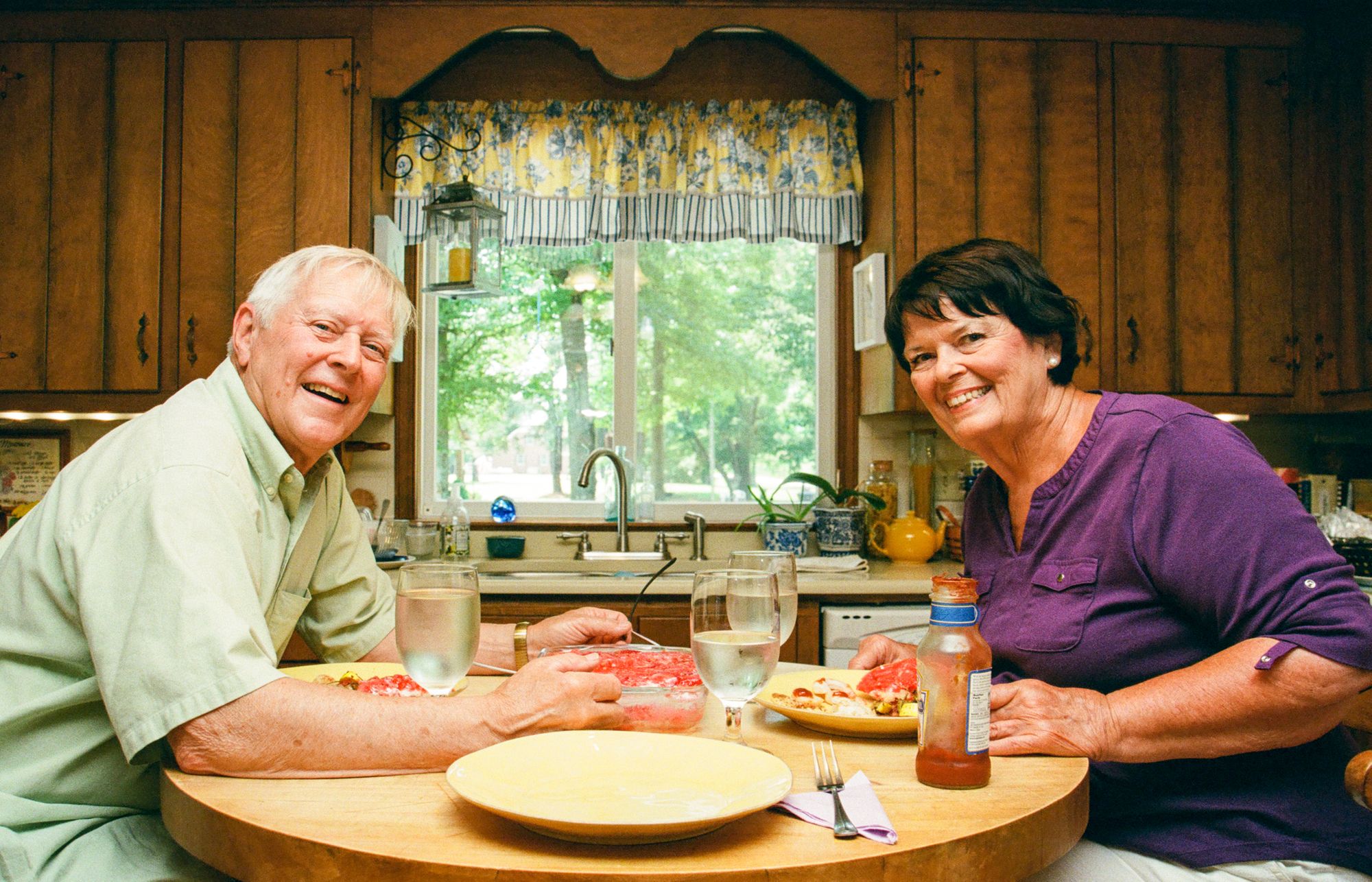
Of course, none of this happens immediately; it happens bit by bit, person by person, move by move. Still, there can arrive a moment when the accumulated weight of these losses suddenly imparts you with the realization of what’s occurred, and the effects of the losses are exponential in their impact, not additive.
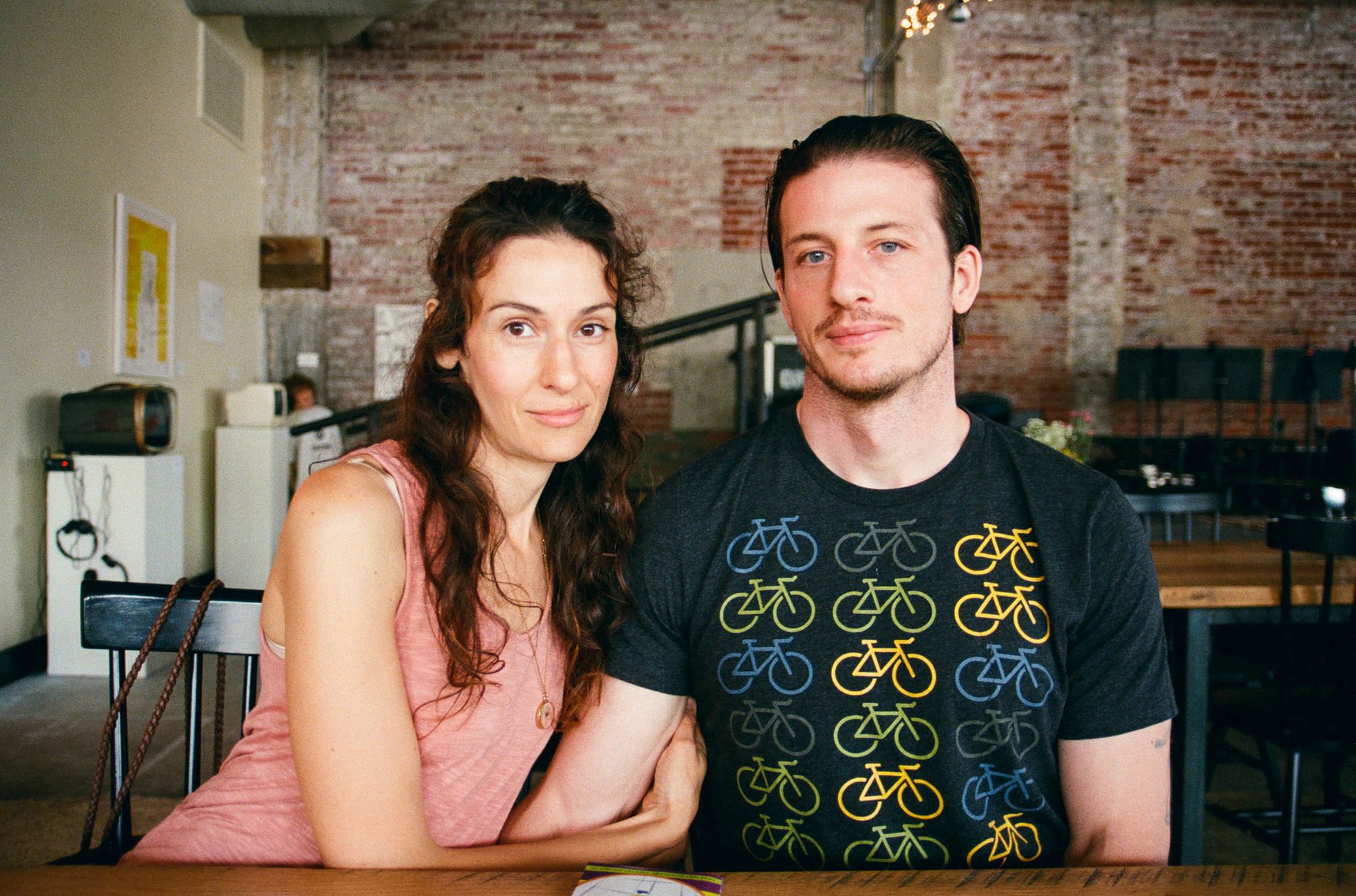
Truly, I’ve been fortunate to know quite a number of lovely people in Hampton Roads, and while I felt keenly each one’s departure — though some much more intensely than others — eventually the critical mass of loss can leave one feeling like an island. This, though, I know is not a burden unique to me, as I’ve had several conversations in the past year or so with folks who, like me, once had considerable social outlets that have now dwindled. Relative to me, these folks have been younger, older, gay, straight, single, and coupled. Like me, these people are generally not church-goers, did not find their tribe at work (with some working remotely, for themselves, etc.), and do not necessarily have hobbies of the sort that lend themselves to repeated contact with the same group of folks. While I do not believe these factors account for the entirety of the explanation, perhaps they explain some of why folks who’d rather not live as loners nonetheless wind up spending much of their time as such.
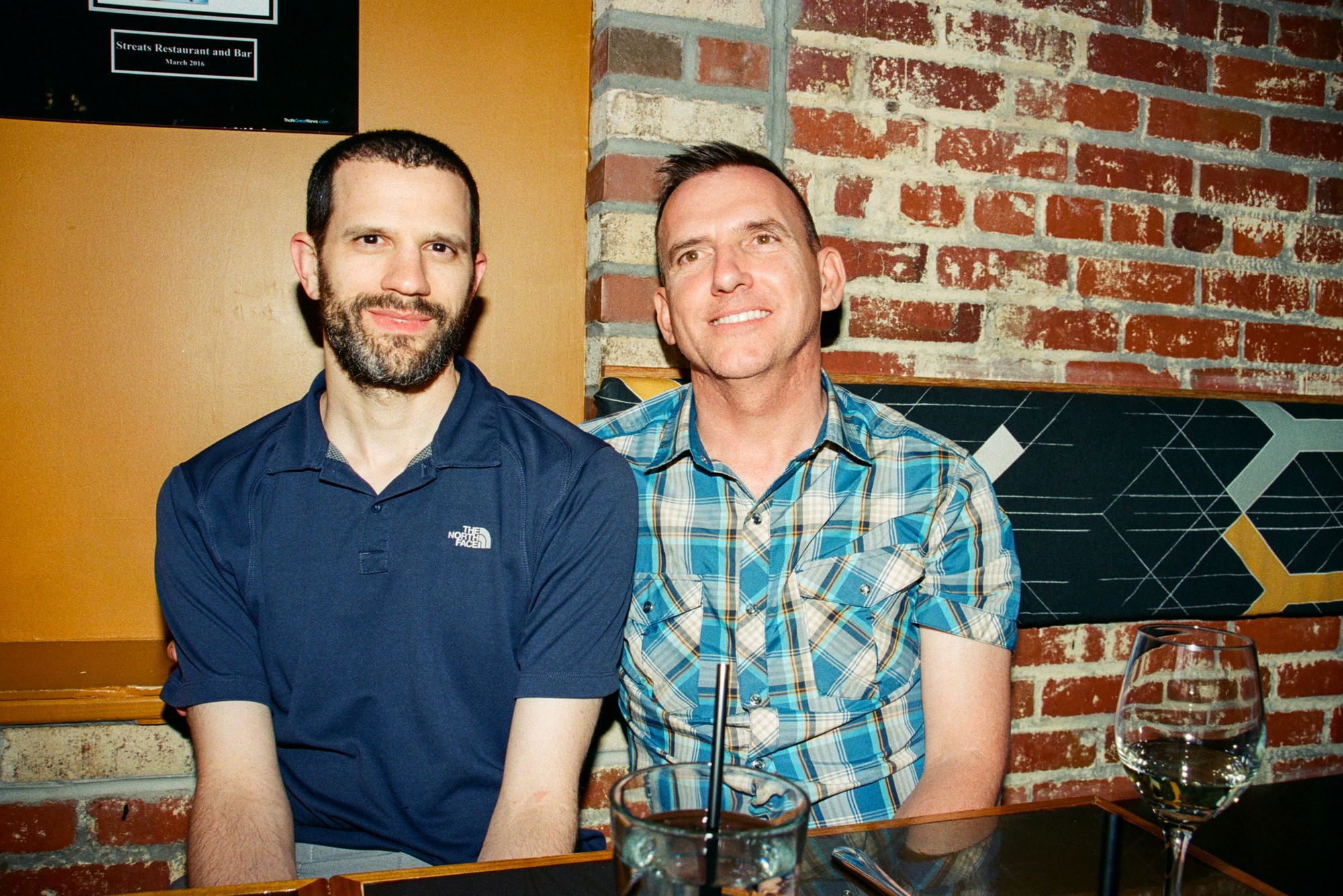
Whatever the root cause, there seem to be quite a few folks who, at least sometimes, feel adrift and desirous of social interactions that have otherwise been escaping them. Indeed, I read with great interest a couple of articles in the Virginian-Pilot about the closing of the Norfolk outpost of Nordstrom. One article focused on the Nordstrom Cafe, and quite a few of the words were chronicling the desire of some of the customers to say farewell to employees they’d seen for years who’d brightened their days or with whom they’d shared moments now and again. Likewise, another article similarly mentioned customers visiting the department store to say goodbye to some of those on the retail side who’d worked the floor. Surely, some of these customers wanted to say goodbye because the interactions with the employees had made them feel much less like strangers than perhaps was so in other areas of their lives.
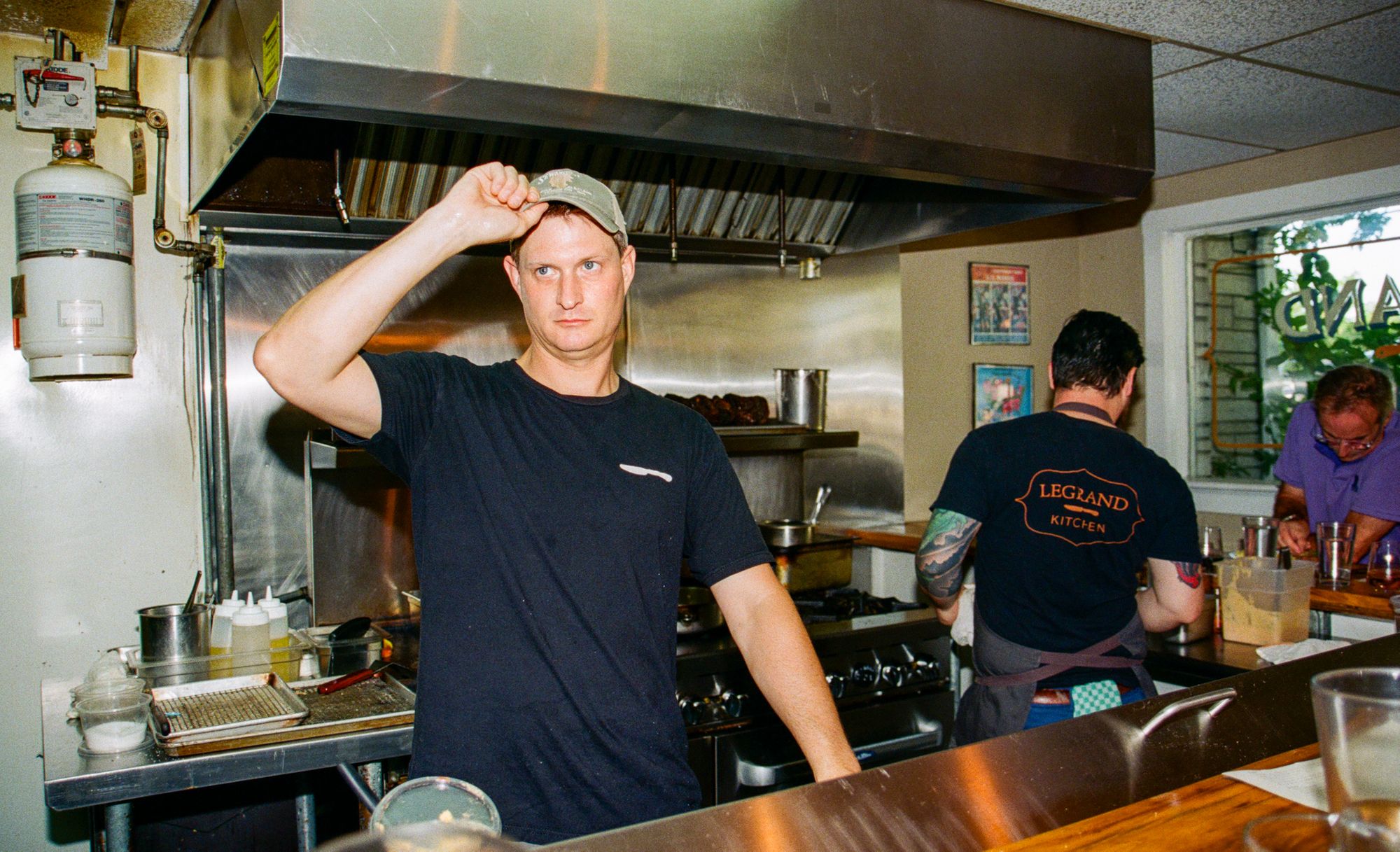
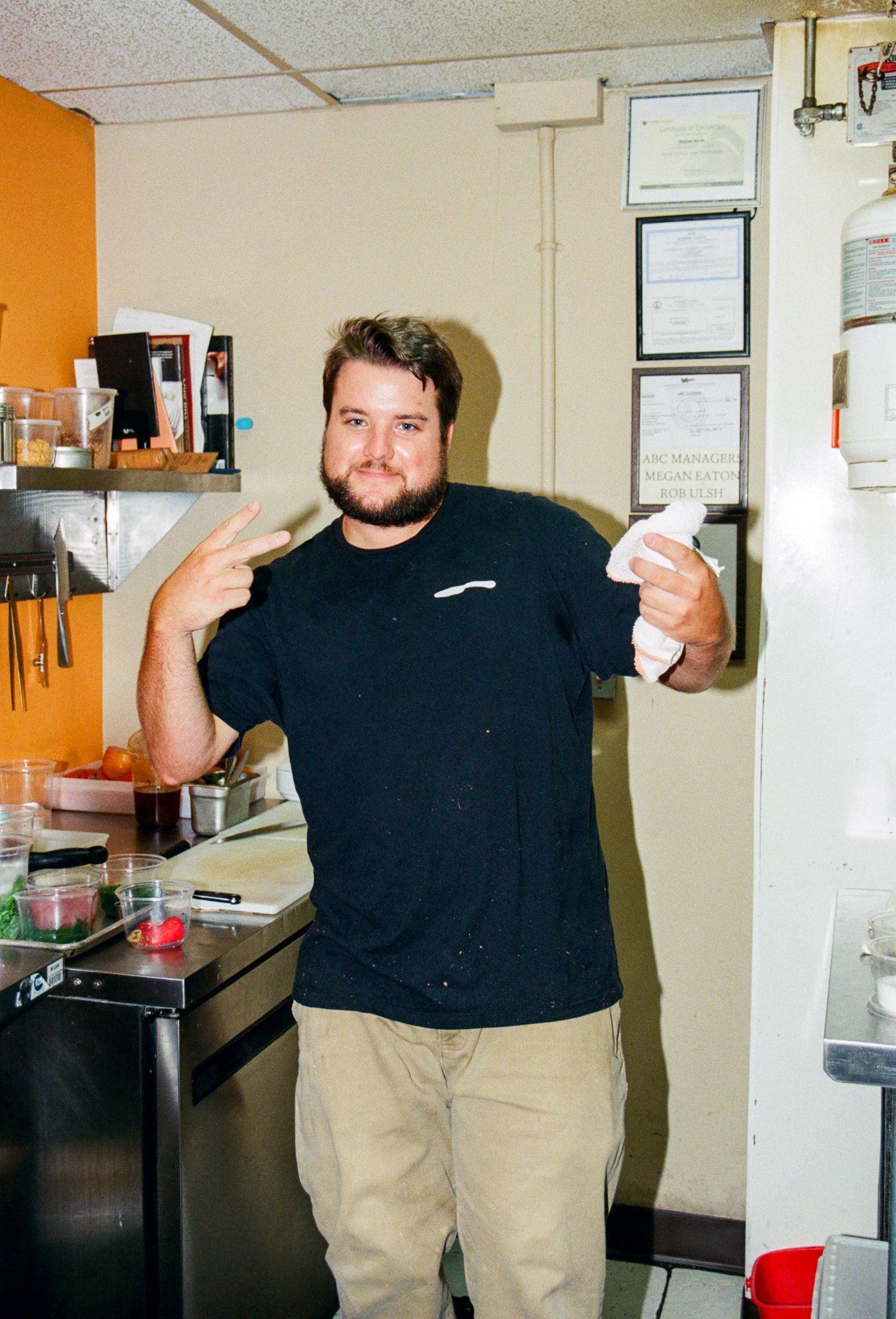
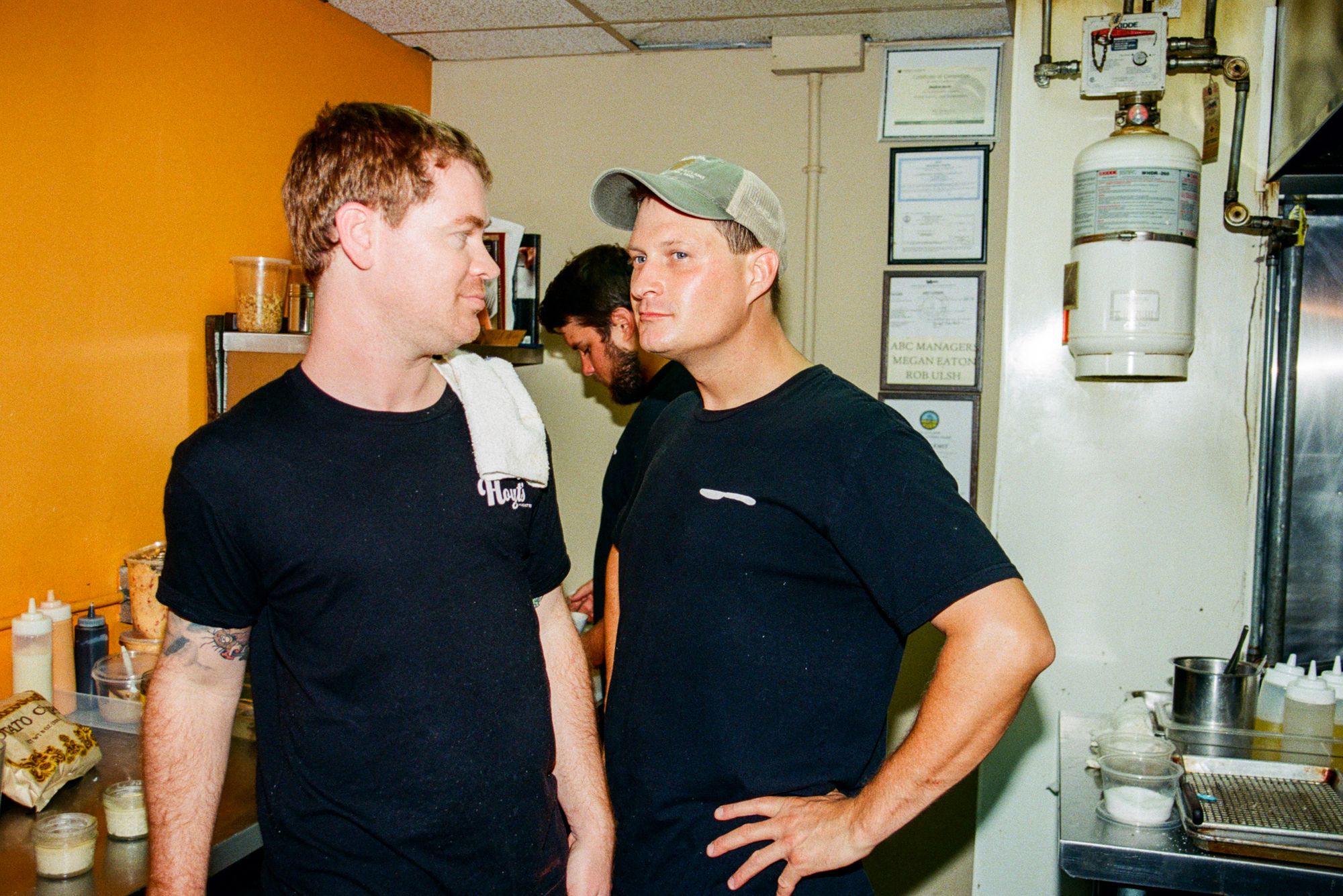
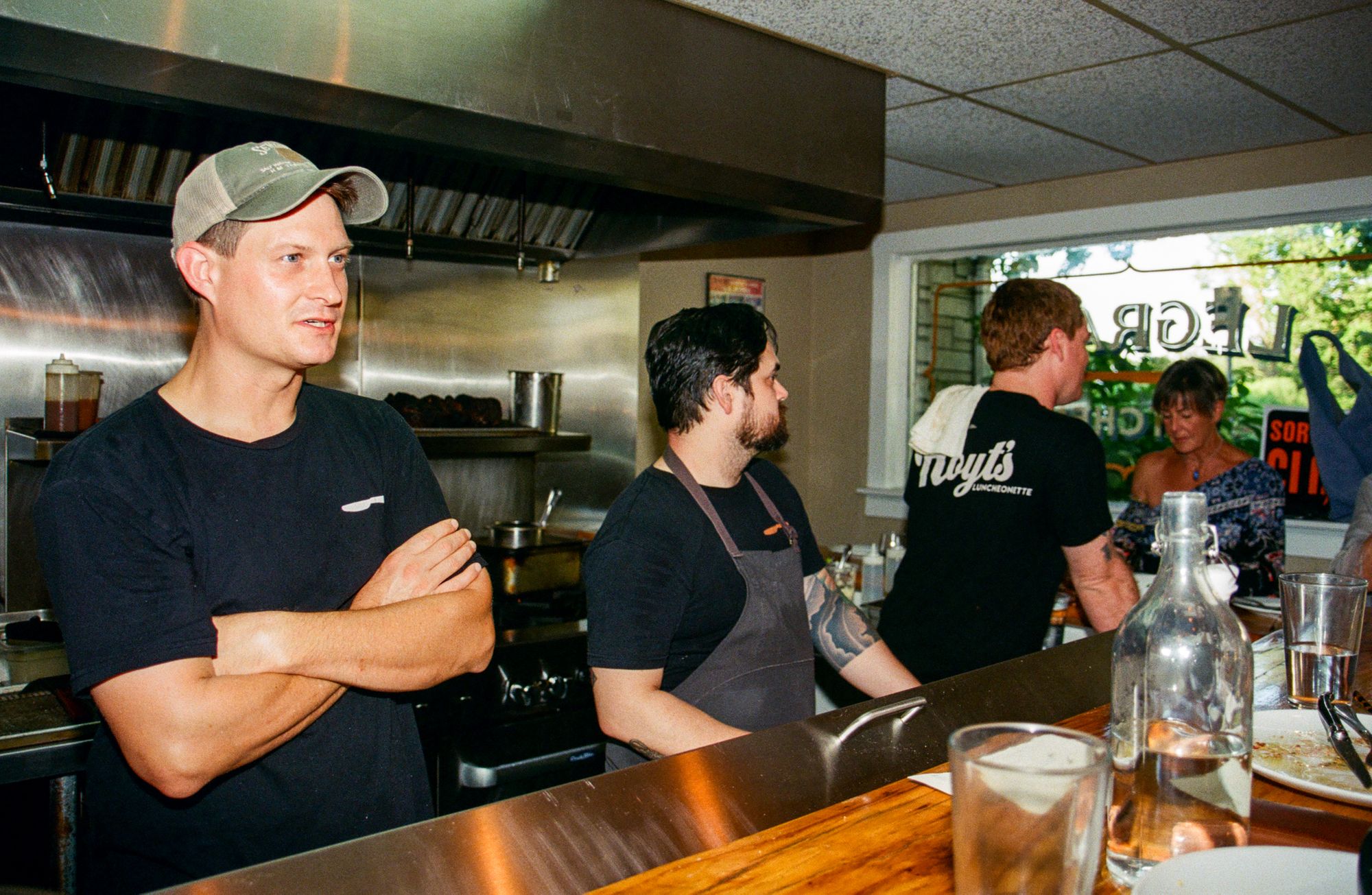
With respect to my own dining out excursions, I’ve long said that they’ve helped keep me sane. While I do very much believe that food well-prepared and attractively presented is a form of art, and while my enthusiasm for that is sometimes part of the motivation to pursue a dish or special I’ve seen posted online, having a meal at a restaurant also serves as a reasonable opportunity to leave the house, change the scenery, and engage in social interaction that I wouldn’t otherwise have. The vast majority of the time, I bop out of the house solo, spur of the moment, when either I really need to get out, or I’ve seen a special that’s sufficiently appetizing to entice me. While there are dining venues to which I would not venture sans company, over the years, I’ve generally found myself comfortable having a meal solo at any place that has a bar and serves food there. Having said that, there are certainly places where solo dining is more often seen than others, though I would not consider it a frequent sight locally, versus in a larger city where, say, more folks might be traveling for business.
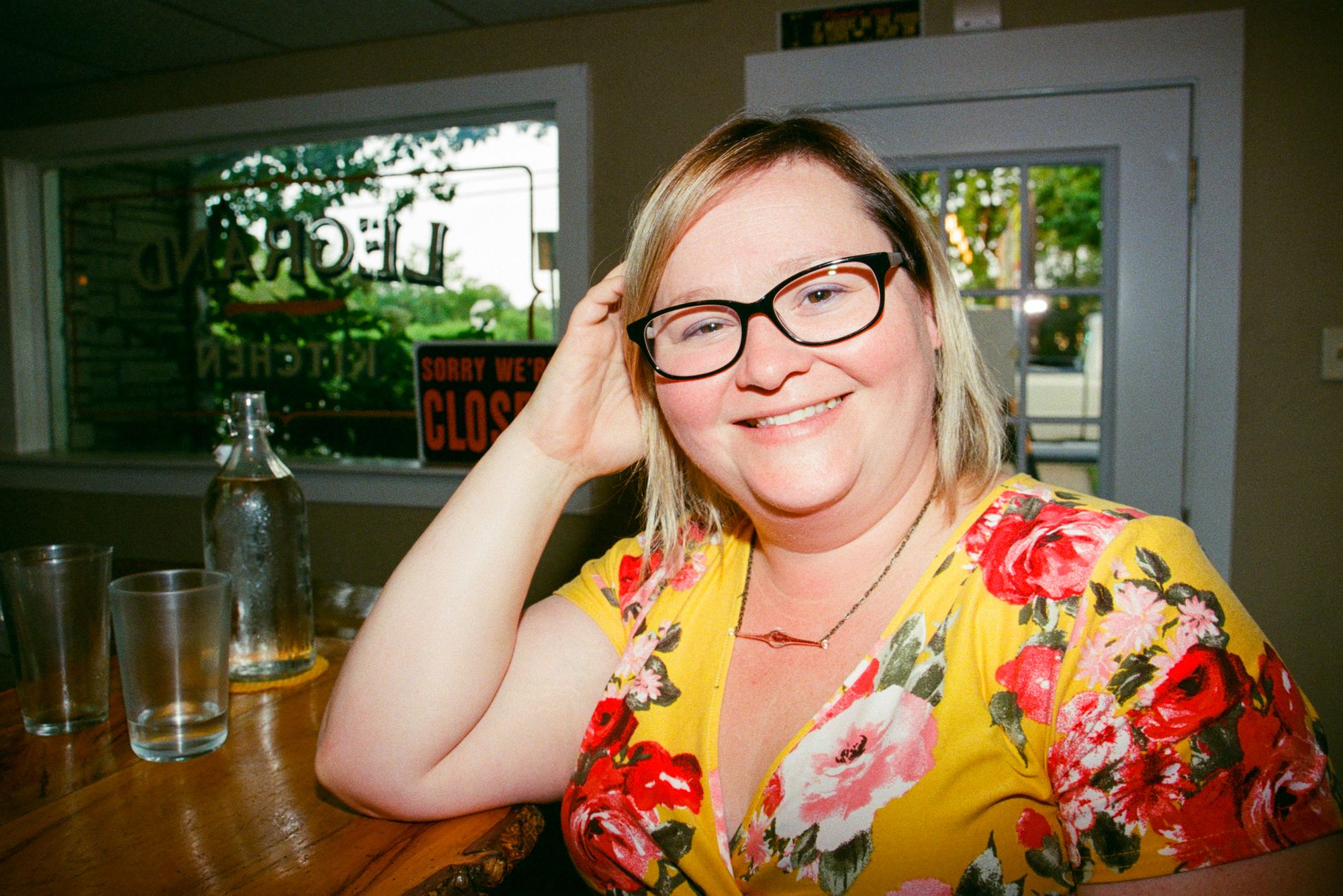
Given these parameters, I weight the vibe from the staff more heavily than might others. And I have certainly been a repeat diner, making allowances for food that was maybe not quite marvelous, if the staff was particularly welcoming, just as I have also been disinclined to return to places turning out great food when the vibe of the place was off for me, either as a function of the chemistry with the staff, the nature of the customer base, the layout of the space or interior design, or some other aspect.
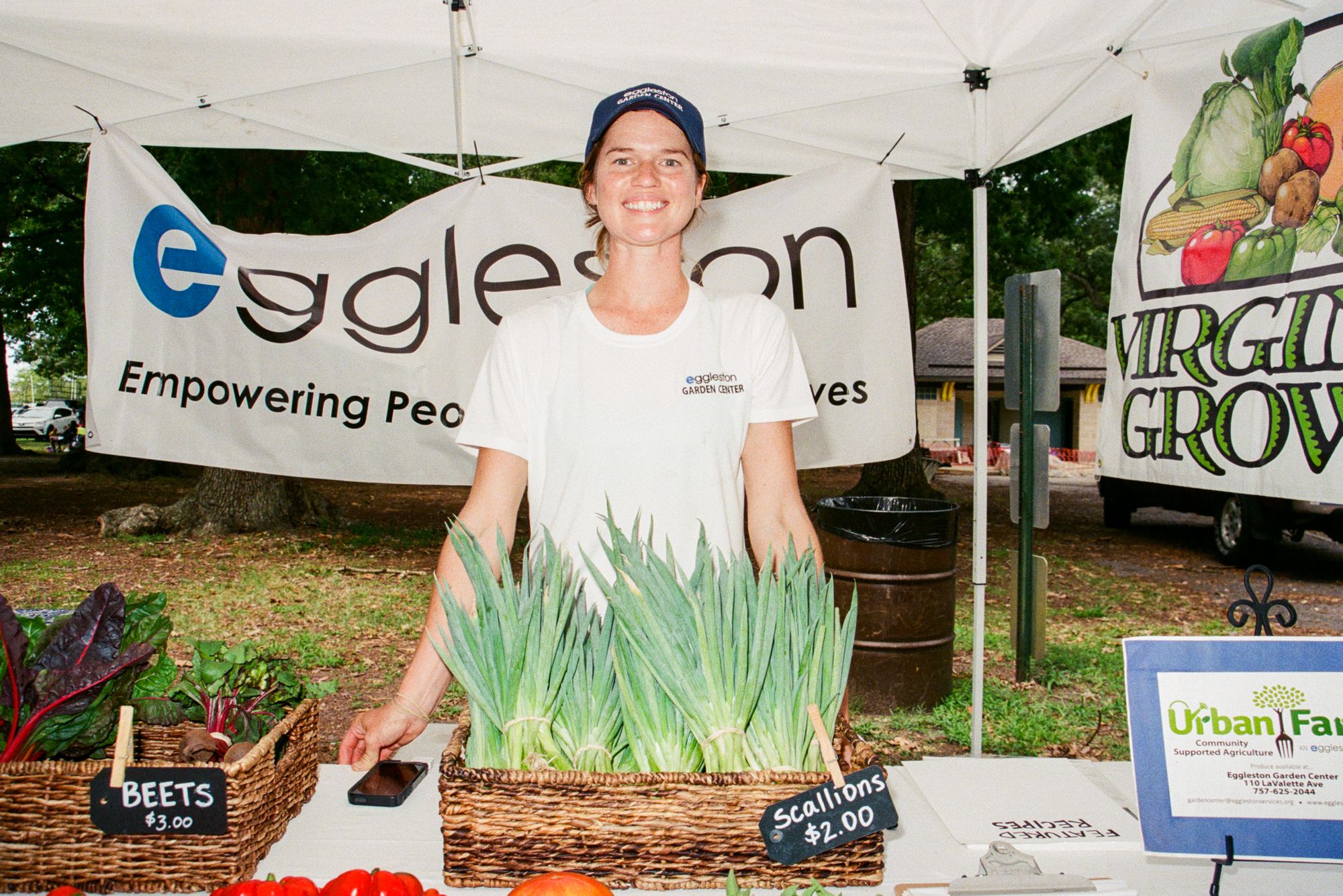
In any event, because of the extent to which I value interactions with the staff of restaurants and related places, I’m glad this project expanded. Initially, I had decided that the official start of it would be Dining Out for Life 2018 and that I would photograph for a few months those who literally shared a table with me, which is to say friends and acquaintances. I’d decided that the project would wrap after a few months — by the time we arrived at fall, or at least winter. However, I fairly quickly realized I probably wouldn’t have photographed that many folks in that timeframe, and decided that I should expand the scope and extend the timeline. This expansion of scope was due to the realization that quite a few restaurant staff or folks in related hospitality businesses in essence shared a table or meal with me, though not literally. So, I decided that the photographic window for the project would close April 25, 2019, a year after Dining Out for Life 2018.
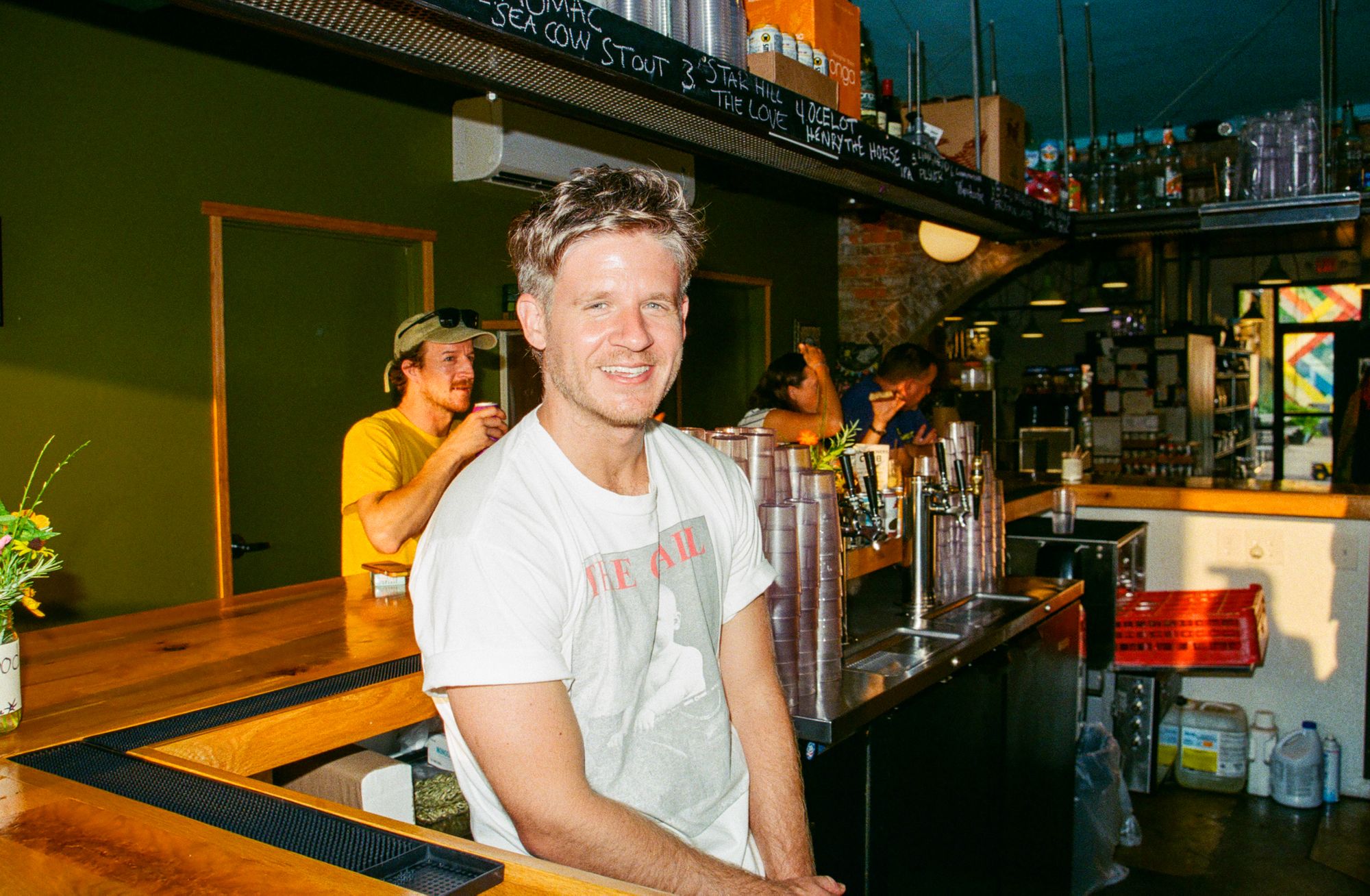
Frankly, I had wanted to photograph restaurant/hospitality staff for quite some time, because I have so valued those interactions. Indeed, the first time I can remember conceiving of such a project was when Donnie was still at Strawberry Fields. There were instances I would come in and, if there were no other customers, we would occasionally engage in real-deal moments of conversation and I’d hear vignettes from his life I wouldn’t otherwise have known. And if I wound up stopping by there after having had a couple of drinks at a bar, my own candor would increase.
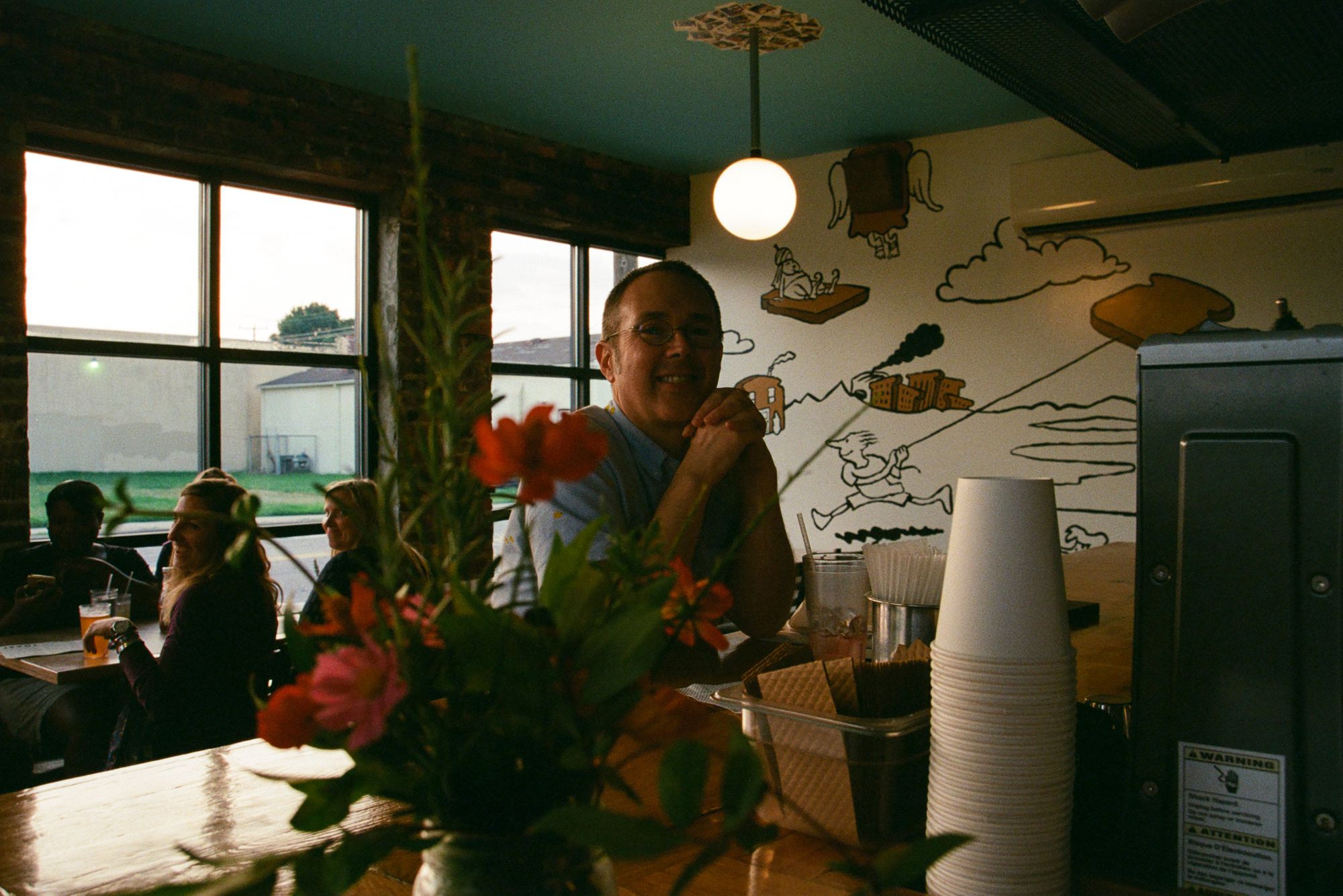
In a world with a paucity of serious conversational exchanges between people who don’t necessarily spend much time together, I found it refreshing, and it connected me with other moments I’d had with, say, baristas at local coffee places back when I used to frequent cafes. I always appreciated those who shared with me significant moments of realness from their lives, and that they listened to mine, even if our moments together were relatively infrequent and brief.
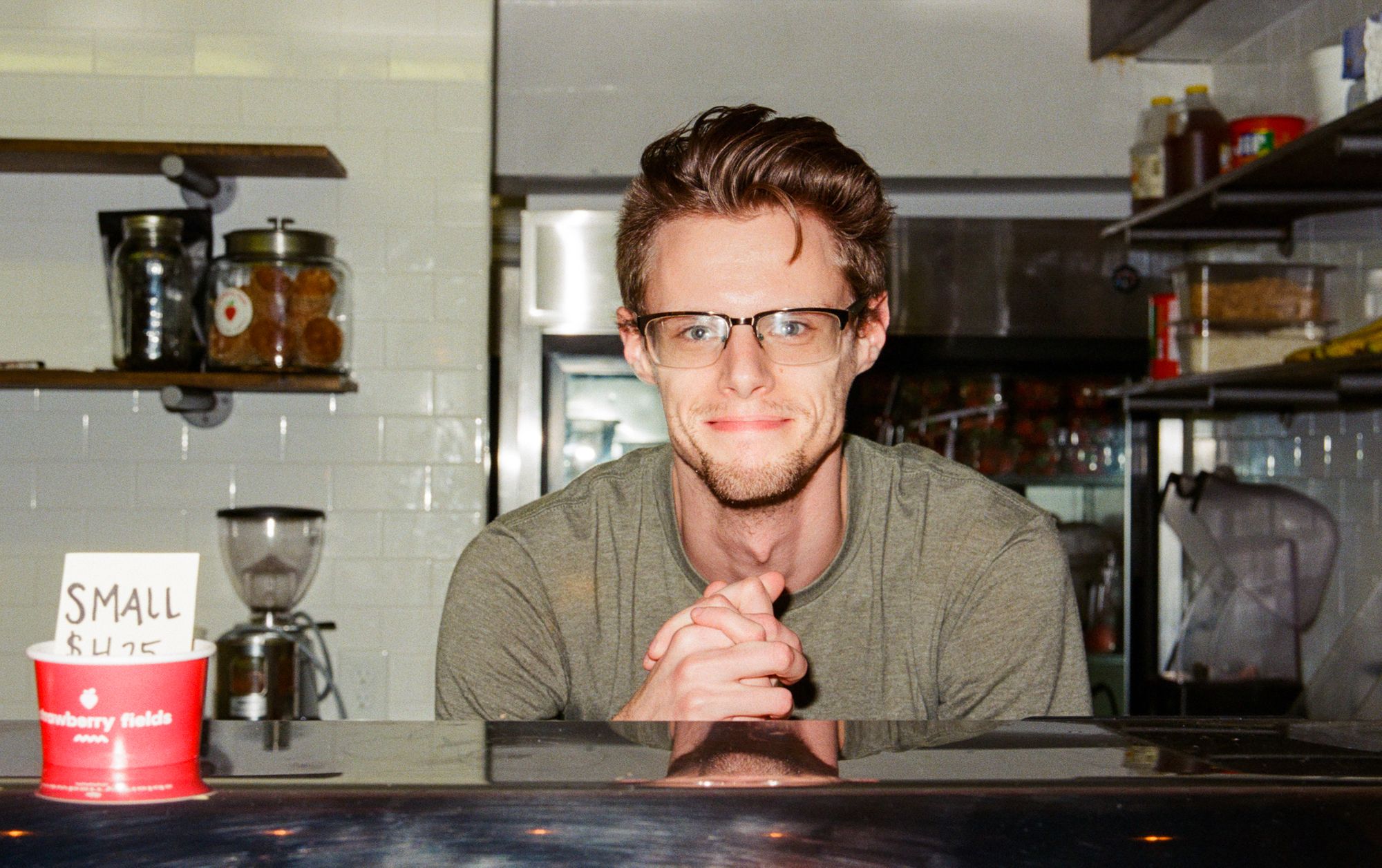
Even today, a couple of years removed from Donnie’s time at Strawberry Fields, if I have drinks on the weekend in Ghent, my thoughts tend to turn to gelato there, as it had become somewhat of a tipsy tradition for me.
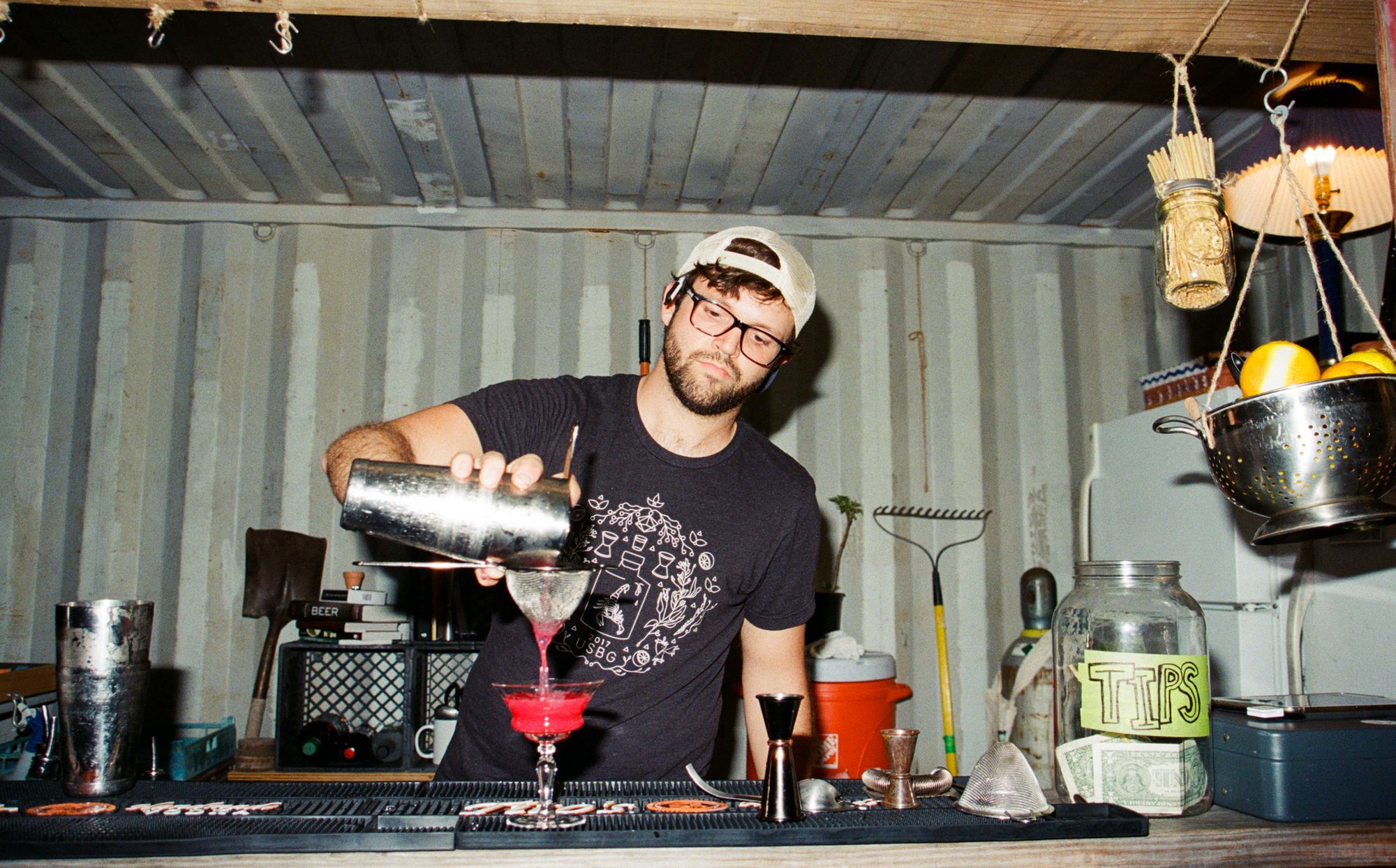
Of course, I have met and known many wonderful people who’ve worked in restaurants over the years. Obviously, for this project, I could photograph only those who are still in the area and still in the industry, but one also can’t forget those who once fit that criteria. No Frill was a source of many of them. Nikki was always such a lovely light of laughter and energy. Though I usually sat at the bar and she never worked the bar, she would nonetheless stop and chat. Joey and Mike were also memorable names and faces among many who worked there for years and years; each time I’ve seen Mike around and about in the years since, we’ve had a nice chat. Likewise, Press 626 featured the Lindsays (the owner — who’s still around — and a server who moved out of the area), Landon, and at least one other gay man whose name escapes me, but who was always much kinder to me than I typically anticipate from gay dudes who are that fetching.
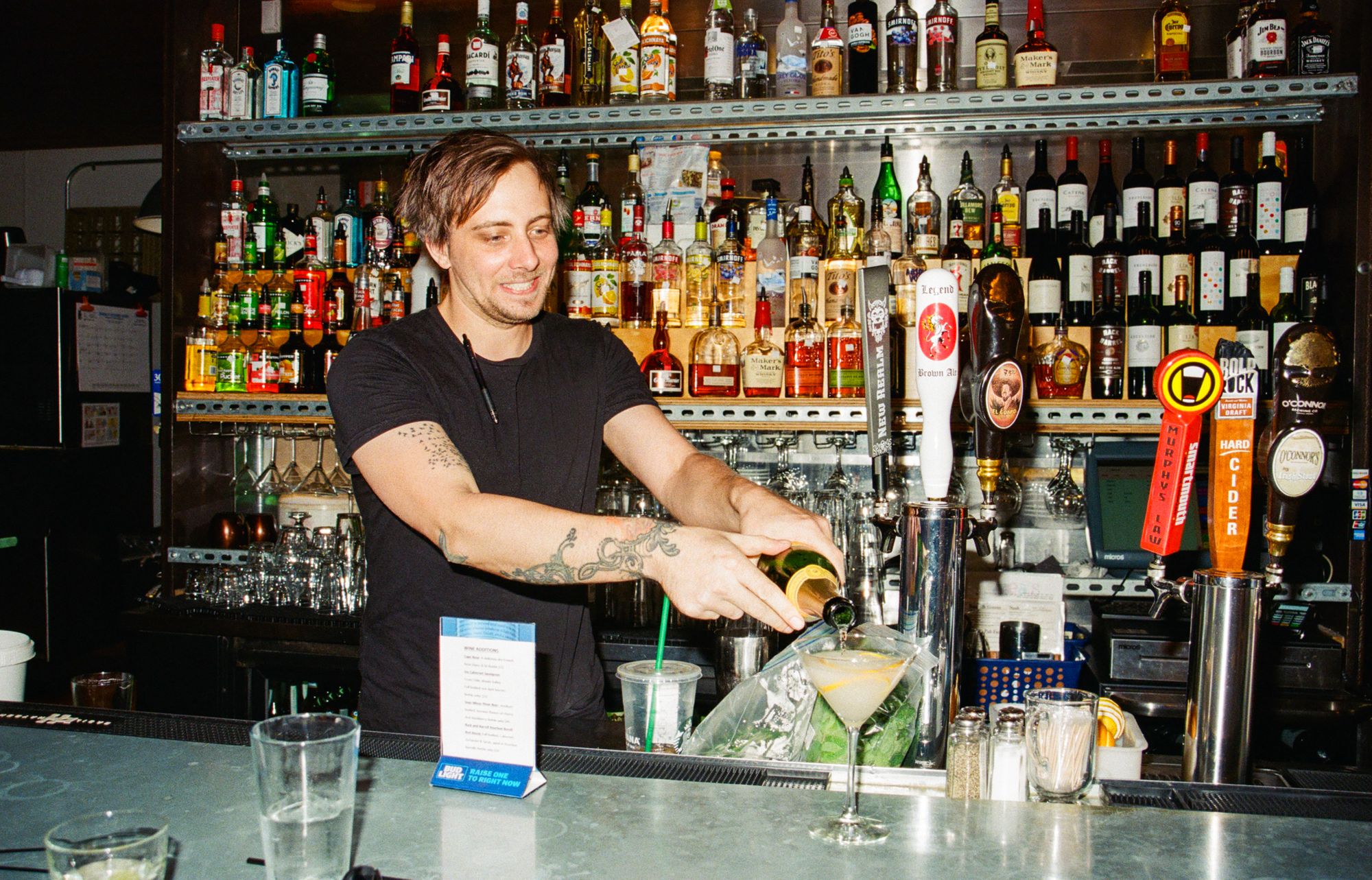
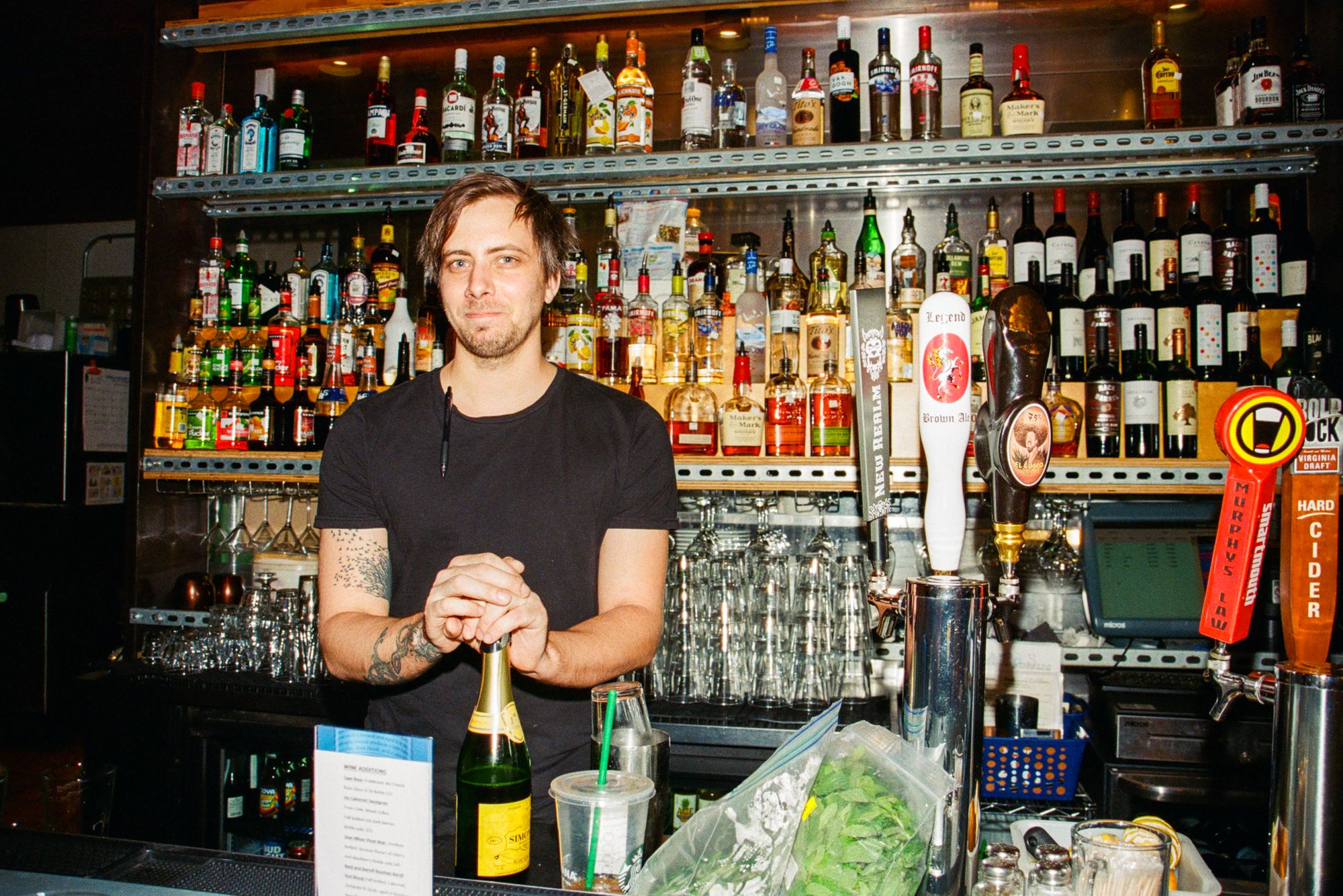
And of course, there was Lawrence of Toast, who had such an ideal personality for interacting with guests at the bar, perpetually lively and ready with some moment of conversation.
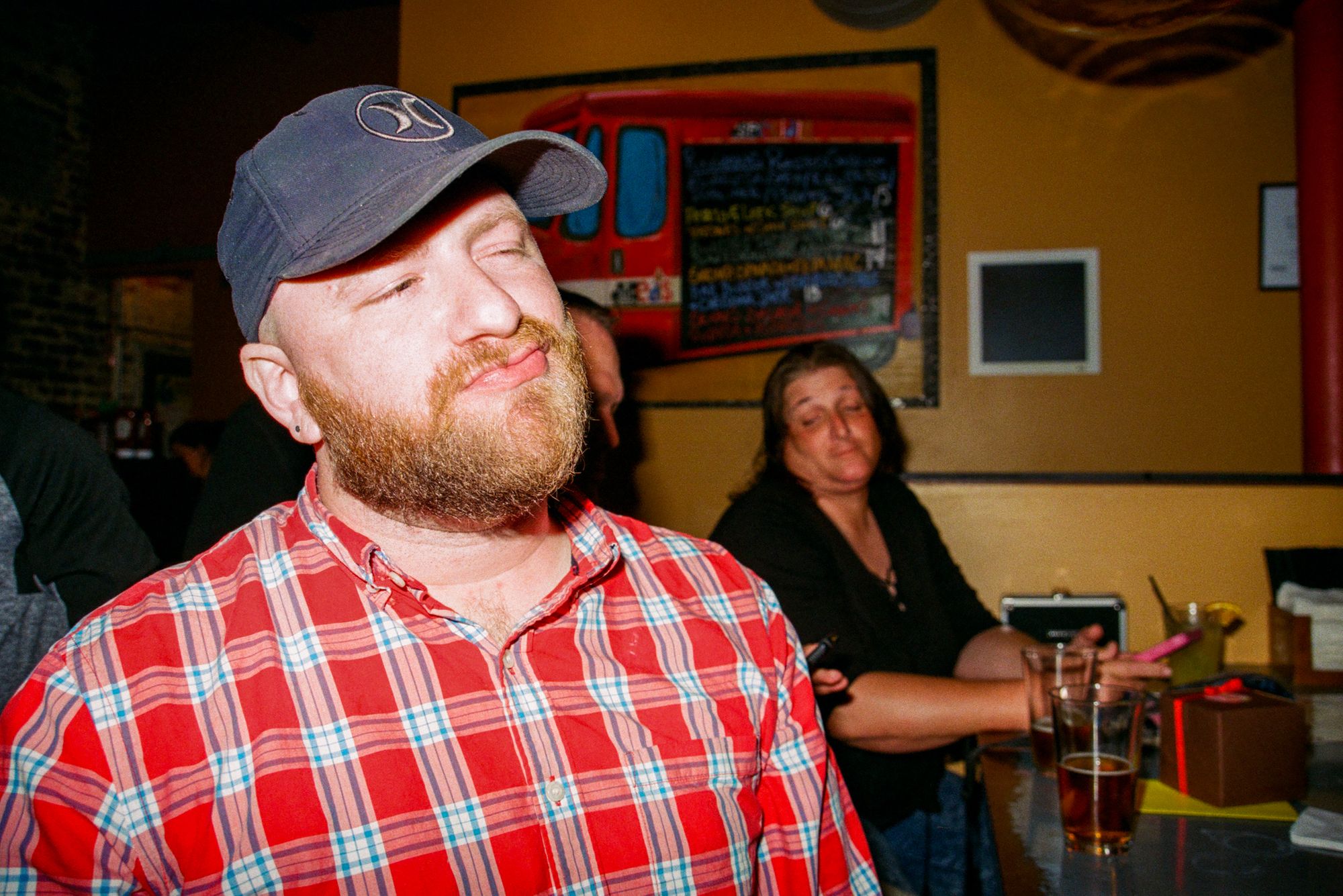
Some of these folks I still know in a virtual sense as they’ve become Instagram and/or Facebook connections. Others live on only in my memory. However, for “Thank You for Dining With Me,” I did make a diligent effort to include all current restaurant/hospitality staff with whom I’ve interacted a number of times over the course of multiple years, and who are still active in the industry locally at a place known to me. I cannot say that I got to everyone, inasmuch as sometimes they were there and my camera was not, or they were really too busy for it to have been appropriate to have asked for a photo.
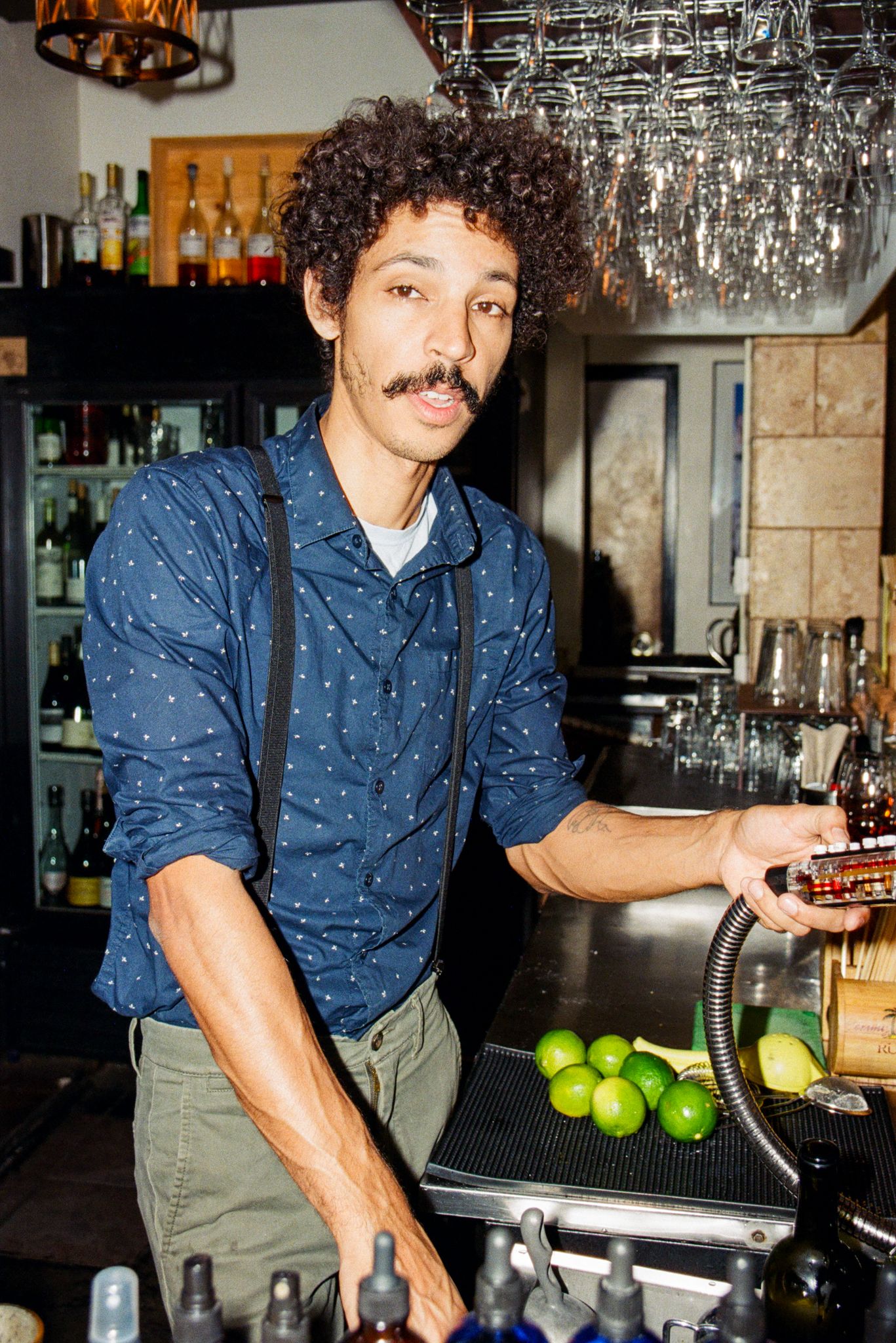
Speaking of having a camera with me… I shot this project on film, not because film is “better” than digital, but for several other reasons. One is that I felt that using different equipment might reinvigorate my desire to photograph. I also felt that perhaps the novelty of film would make folks more likely to say yes to being photographed, particularly anyone who might be leery of being photographed and having that image potentially wind up immediately on social media. I also felt that using a medium that had an actual cost attached to it and no ability to immediately review what one had just shot might make me slow down a bit and be more deliberative, in a way counter to what the duo of digital photography and social media so often are about. Given the displeasure I was feeling (and continue to feel) about much of social media, something counter to that seemed a good thing.
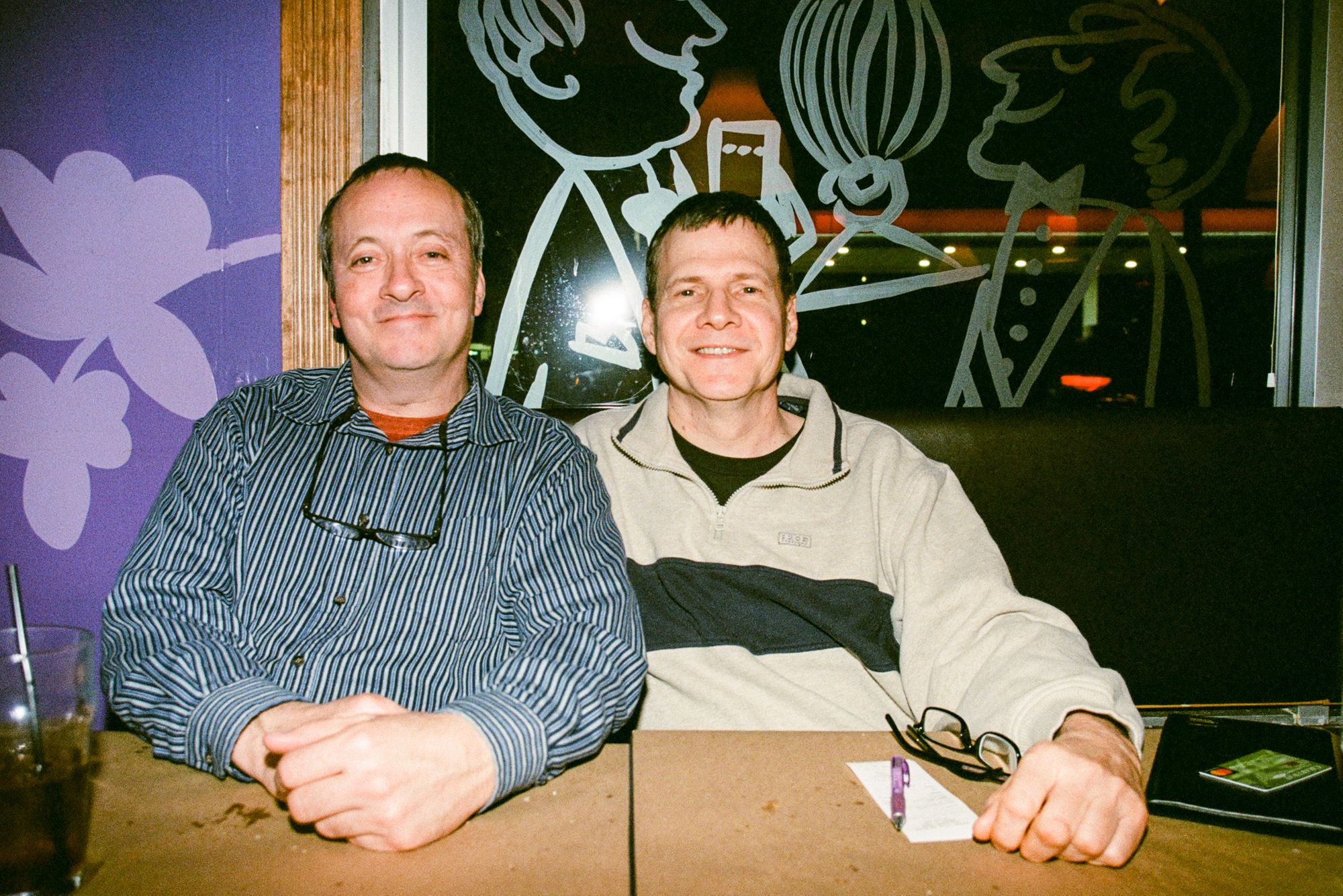
I had also read or heard a comment about film that resonated with me, which was that the frame of film in the camera that recorded the scene had actually been present in that moment. In essence, one could hold in one’s hand a tangible artifact from that slice of time. And that object that had been present in that slice of time is rather immutable after development — assuming proper storage and handling — a sense of permanence that appealed to me quite intensely in a world that sociopolitically, climactically, and otherwise has felt as if it’s been spinning out of control.
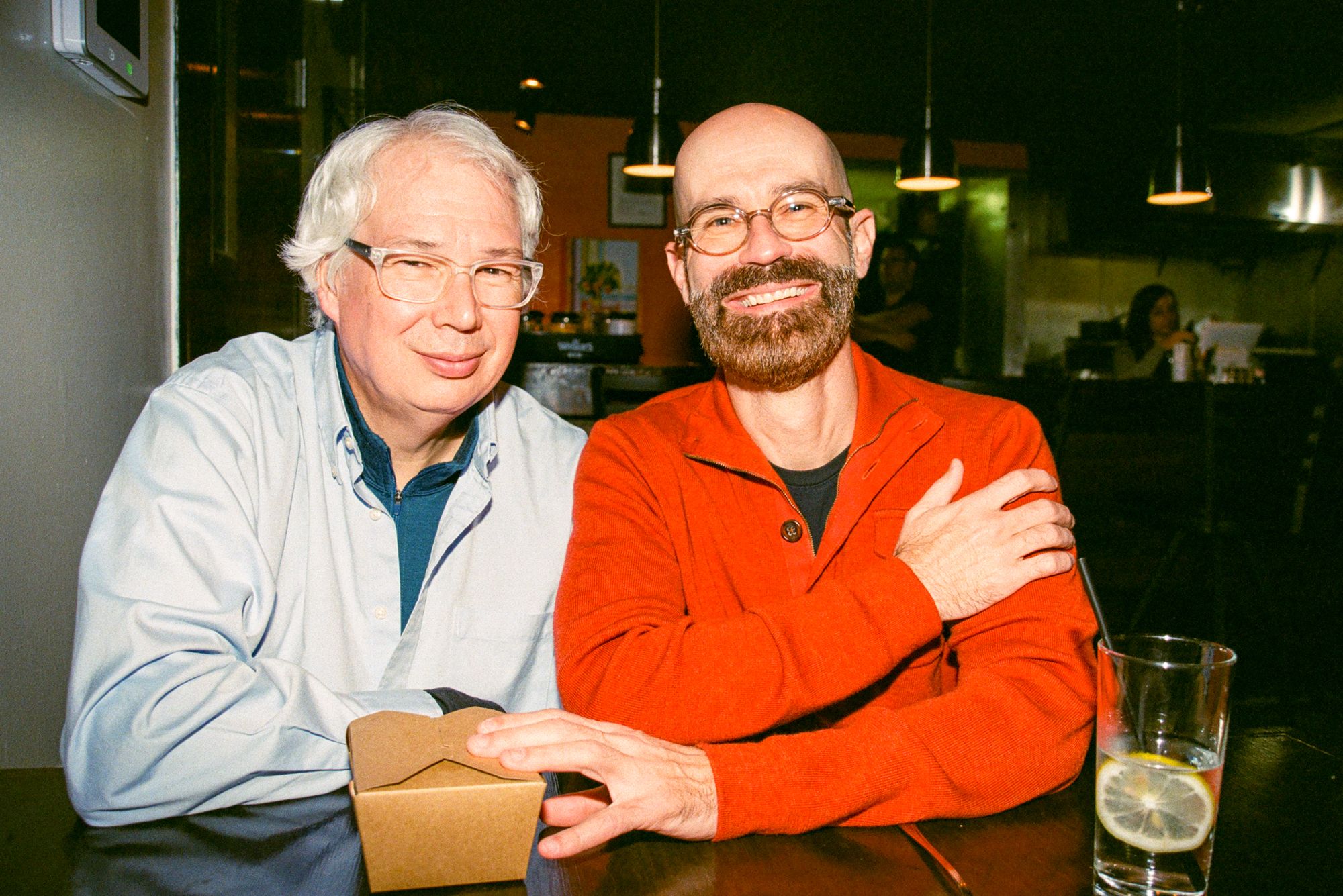
Further, thinking back to when I shot film as a kid and young adult, not for the sake of novelty but because there were no other options to capture images, I recollected the pleasure of anticipation and discovery associated with wondering how shots turned out, yet having to wait to finish the roll, sending it away for development, and then — back then — receiving in the mail prints that sometimes revealed moments one had forgotten one had captured.
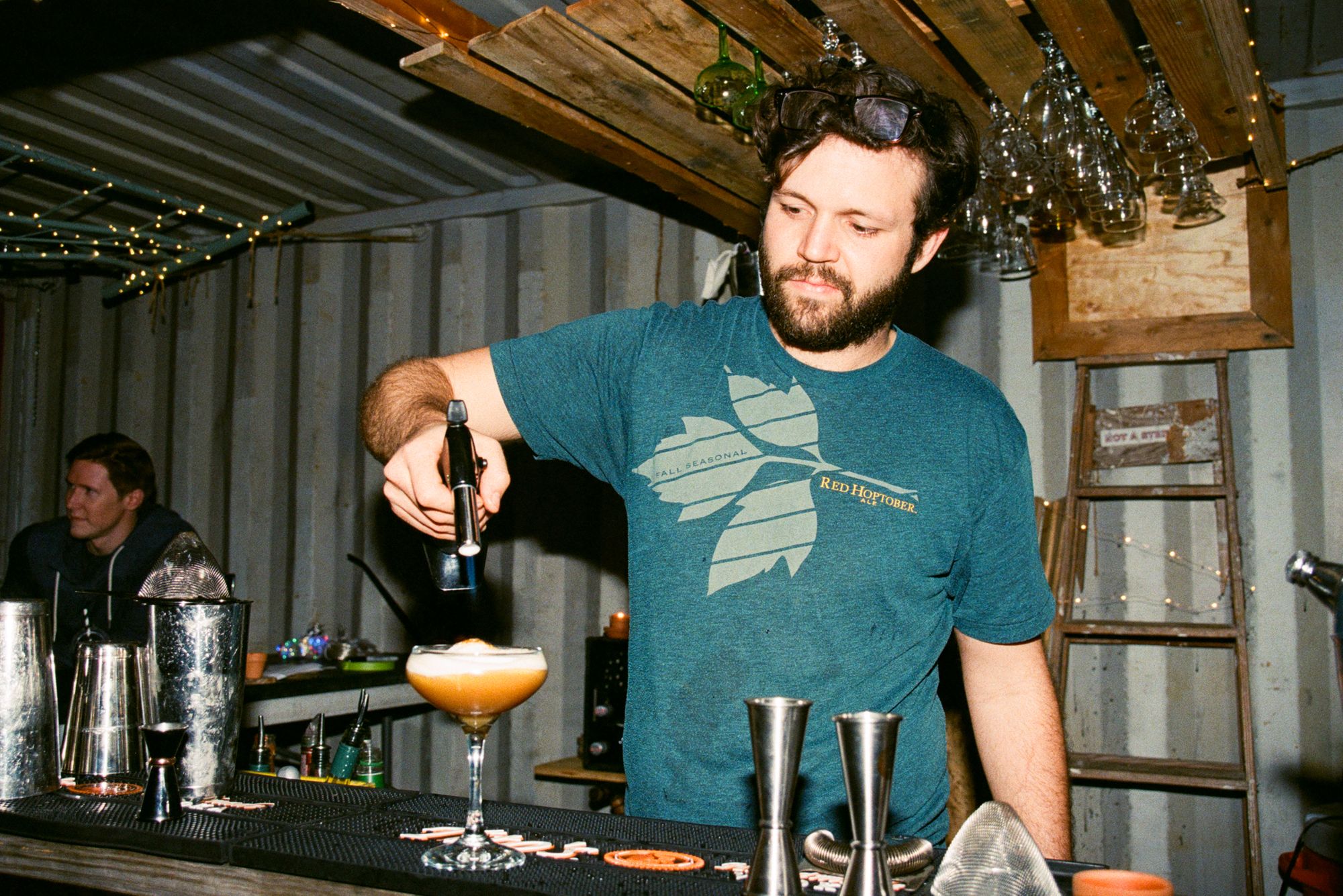
And in the context of the project, I liked the idea of having an entire roll of film comprised of images of people for whom I had a fondness, because although I usually value my people photographs most of all, perhaps never had I, over an extended period of time, captured a variety of folks in candid-portrait sorts of looks that occupied all the frames on a roll of film.
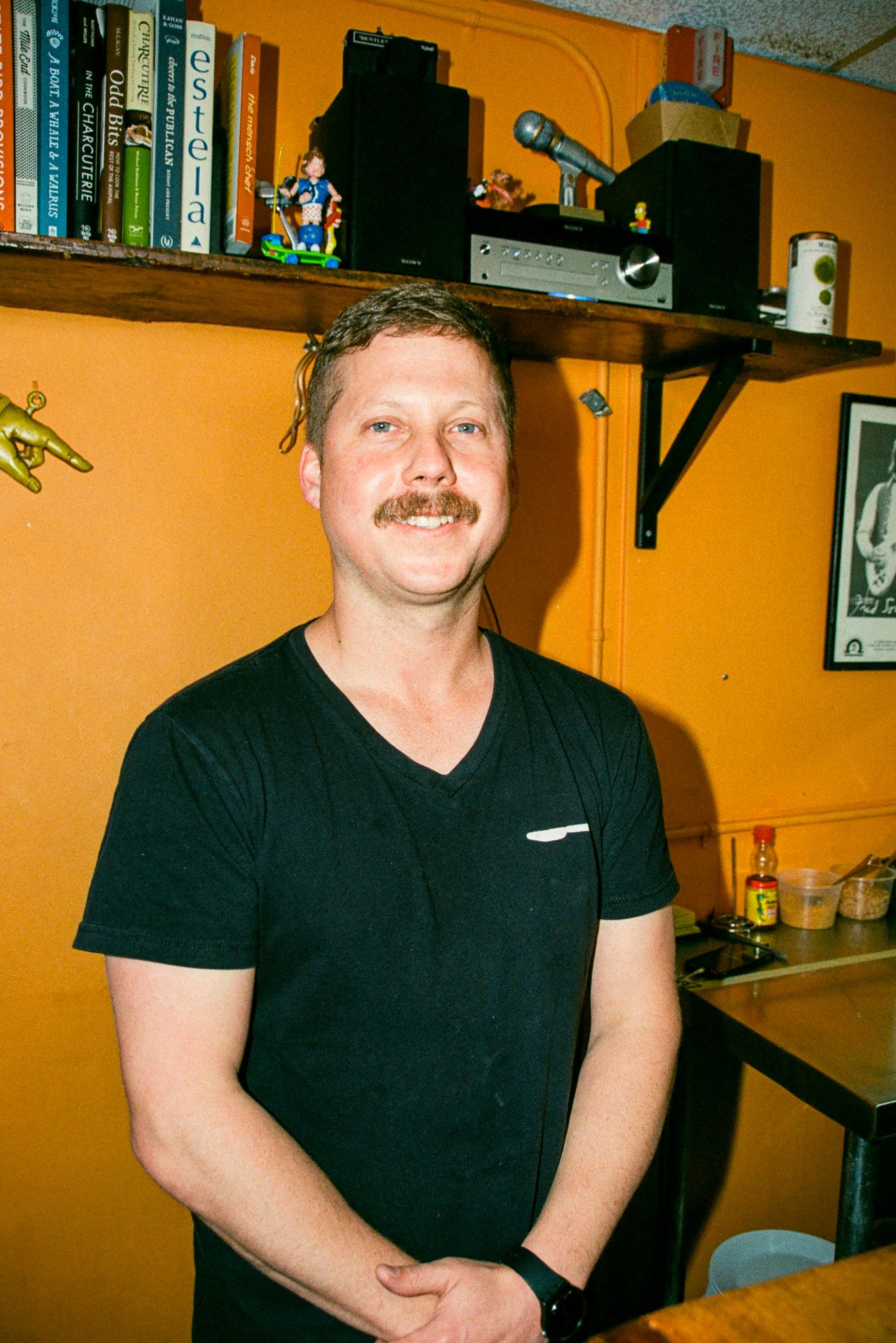
All images were shot on Kodak Ultra Max 400, which is the current version of the film I shot when I was younger. After a lot of consideration and review of images online, I decided to go with that, instead of Portra, arguably the gold standard of color negative film these days, because I do really prefer the color and contrast of Ultra Max to Portra, though I sure wouldn’t have minded having Portra’s much finer grain structure.
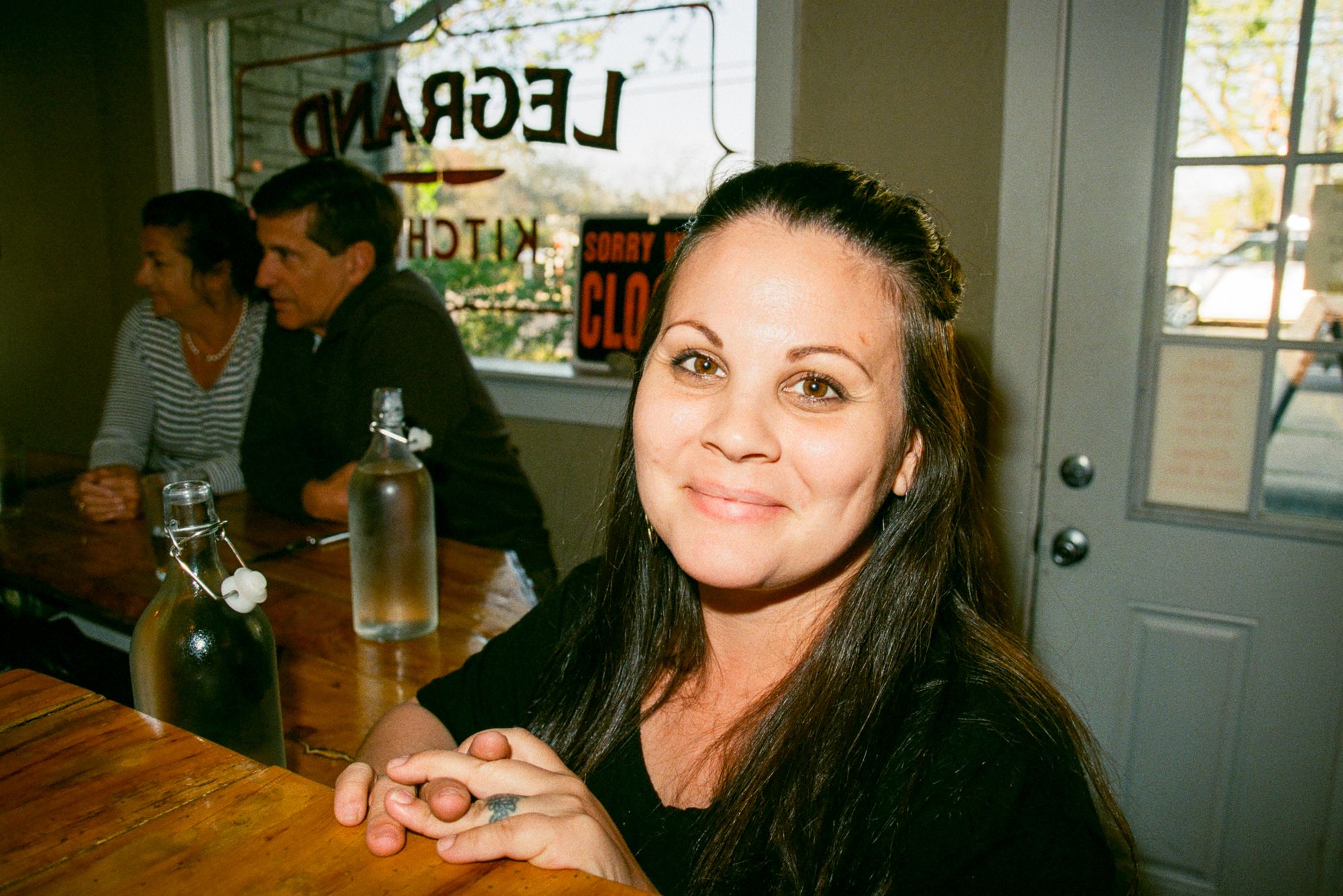
Images were captured with a variety of cameras: the Nikon F4s, F5, and F100, which were fitted with a Nikkor 28-105mm 3.5-4.5 D zoom lens. More often than not, the lens was set at 28mm.
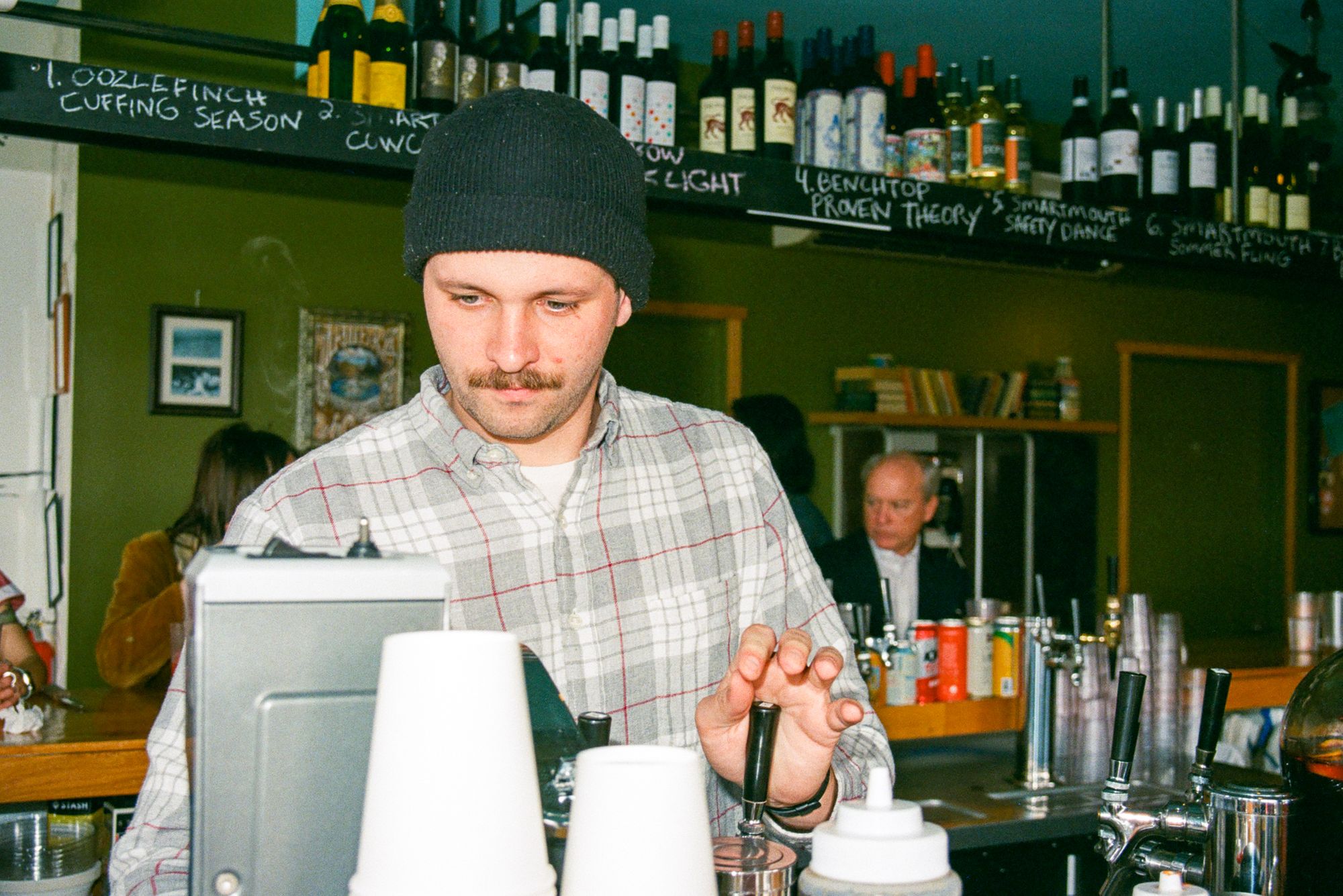
The approach and concept were simple. All images were to be captured from my seated position at the bar or a table, preferably with foreground inclusions that make a nod to that. If the person being photographed was a restaurant or hospitality employee, they were photographed from where they would normally be in the course of interacting with me. Friends seated at a table with me were also photographed where they sat.
For the most part, no one was posed and folks presented themselves as they wished. In a very few instances, I may have provided guidance if something was unflattering, and likewise, I did not use images I found unflattering.
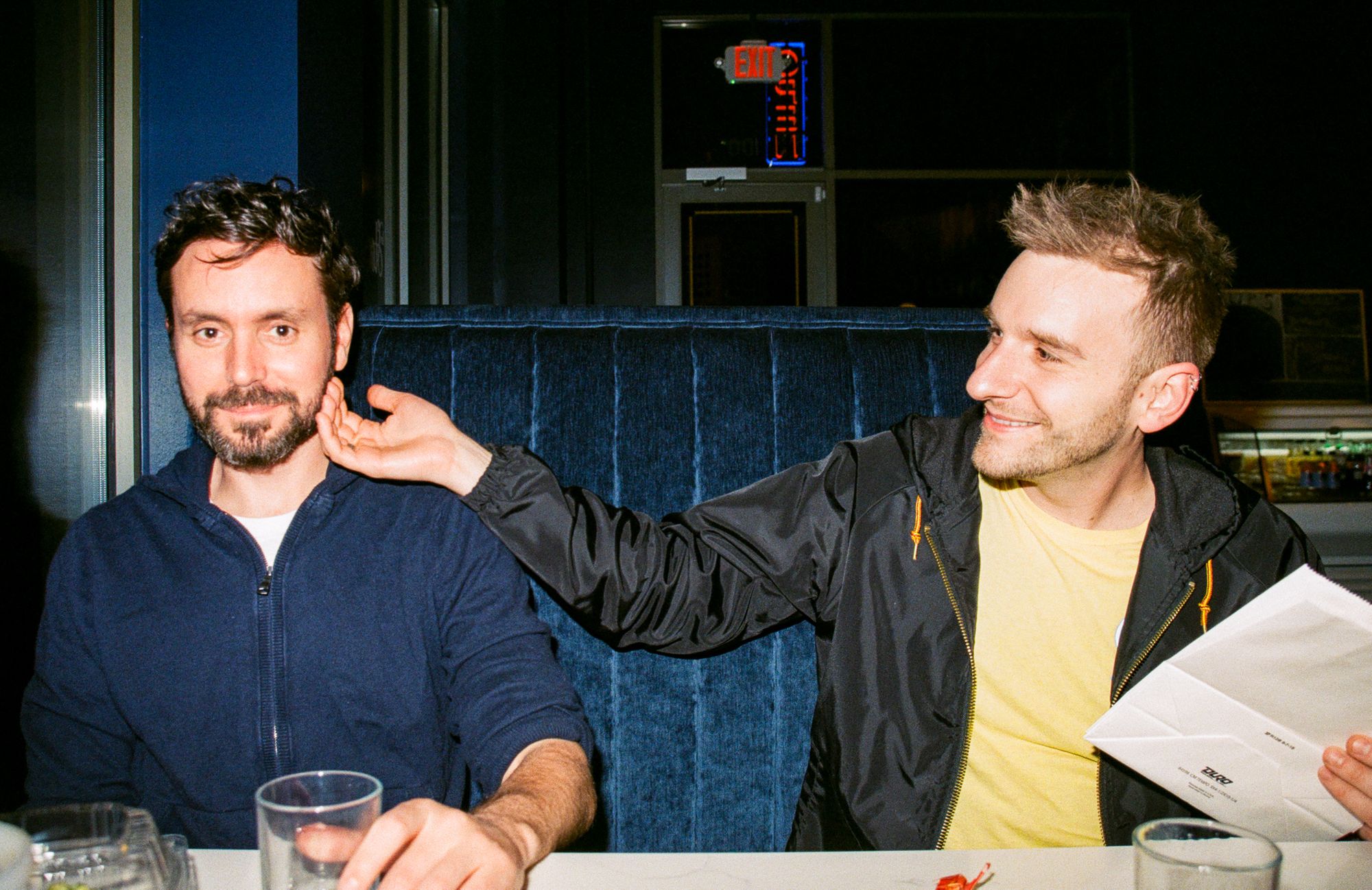
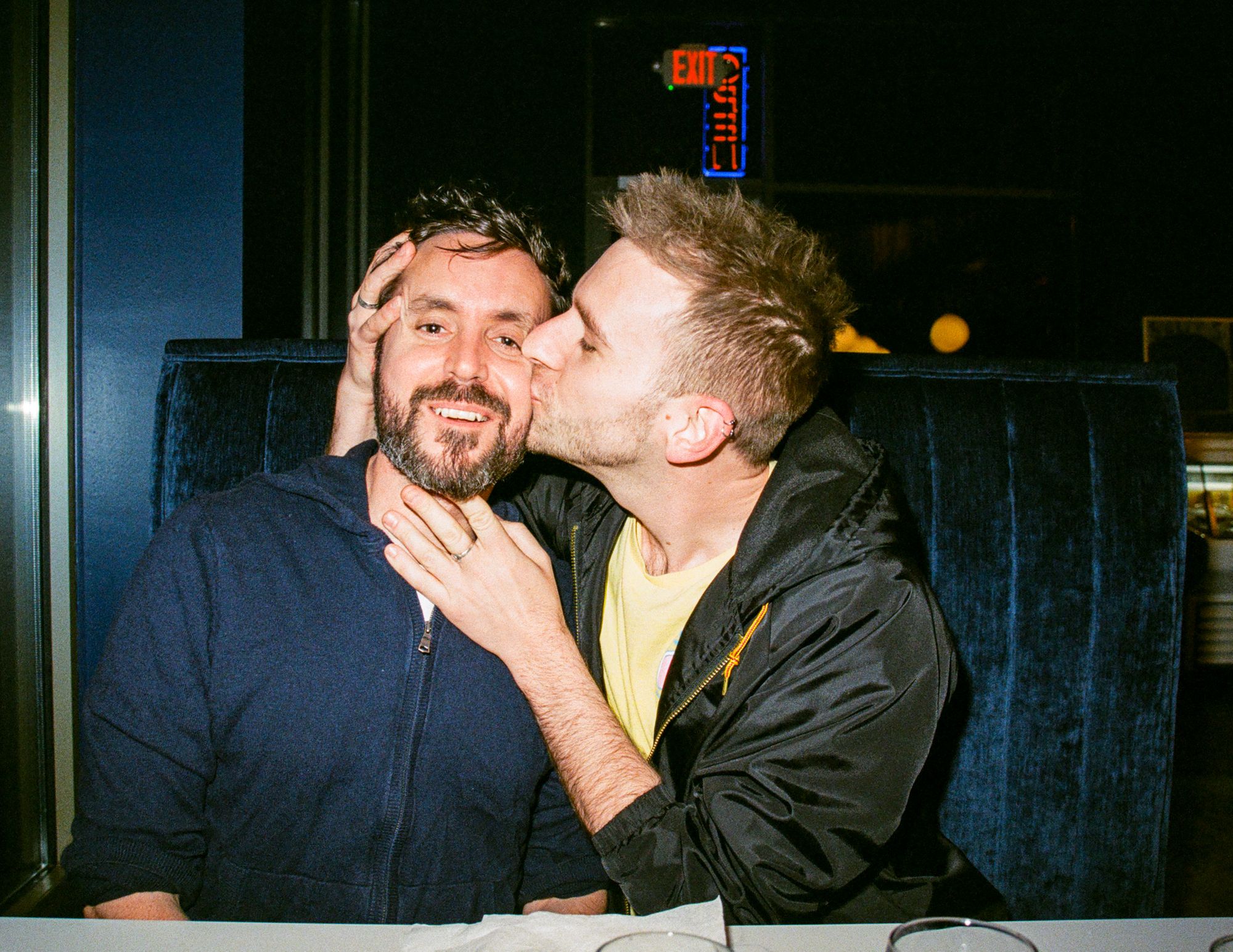
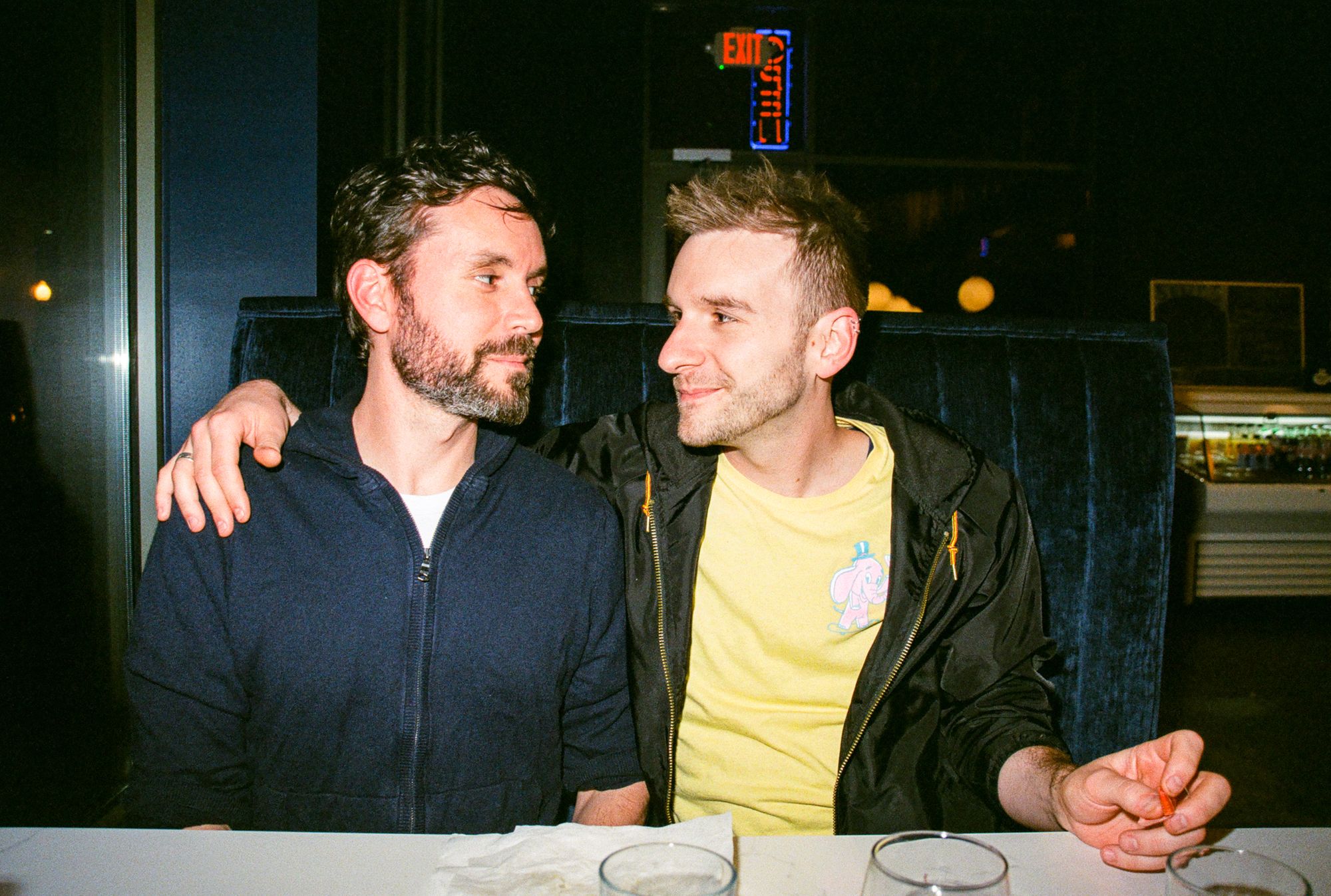
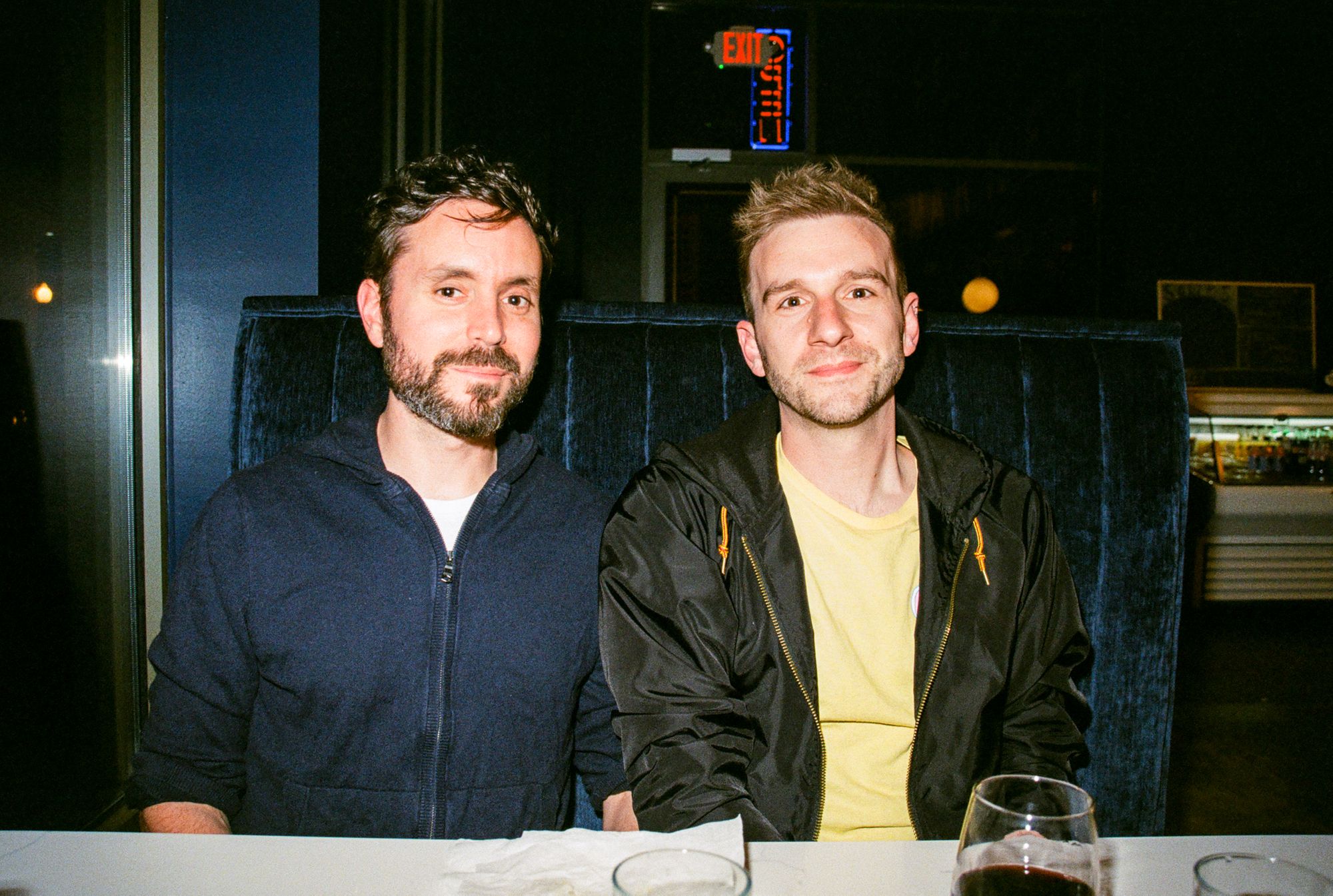
While I would like to have captured all of the images using only available light, that was not feasible in most instances, so various Nikon flashes were used. And it was direct flash, not bounced, because one of the things I had never really noticed or thought about is that many restaurants have ceilings that are high, not a neutral color, or both, rendering bounced flash impractical.
The film was processed and scanned by The Find Lab in Utah, and all images were adjusted by me in Lightroom for exposure, color, and contrast to greater or lesser degrees, as needed. A few images were cropped somewhat, and others had perspective corrections where I felt there was considerable room for improvement. (The latter two were related to matters of composition I perhaps could’ve handled better at the time of capture, while others were associated with the optical characteristics of the lens.)
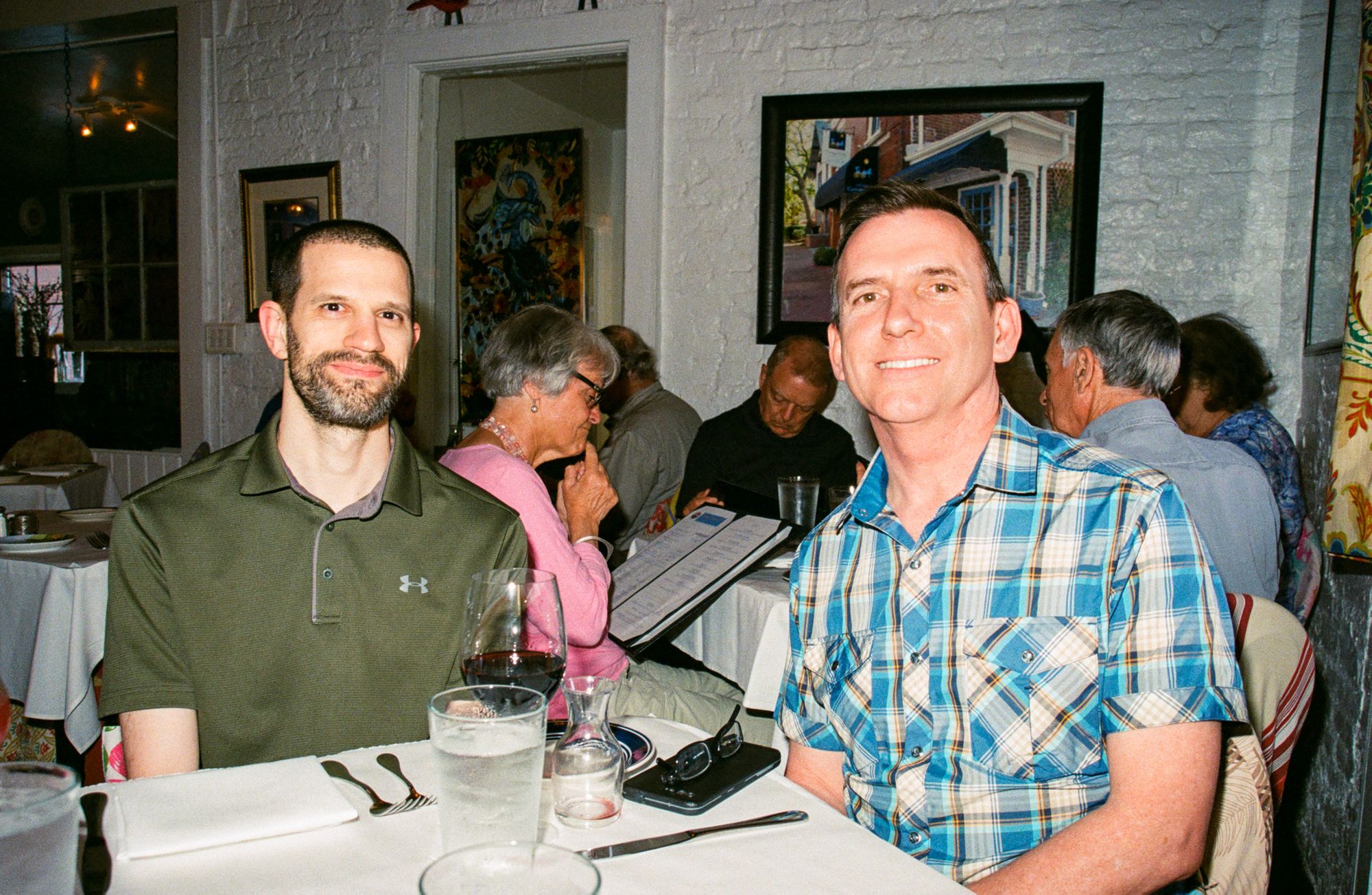
And I mentioned that I did not pose people. That’s in some measure because I do not think that that is my forte; indeed, posing people is a special skill. And that, like well-produced food, is an art. While I think I’m reasonably adept at recognizing a flattering or appealing scene or look, or one that is the converse of that, guiding someone into such a position is not where I have expertise. I say all of this to point out that I did not intend for these images to be, nor do I regard them as being, art so one shouldn’t conclude I’ve written a long post here because my opinion of the work eclipses reality. Having said that, I am extremely fond of these images, and think many of them are quite flattering.
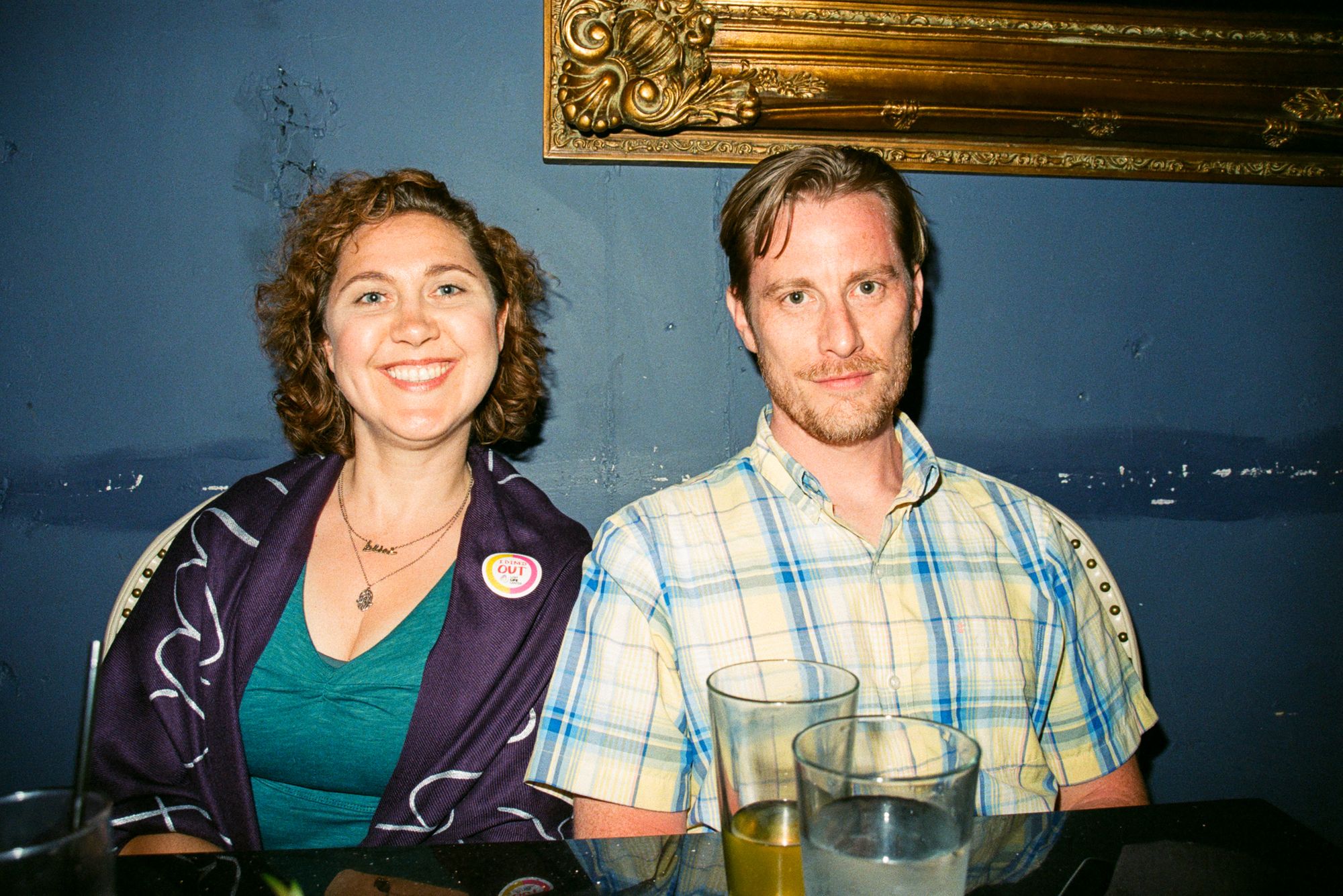
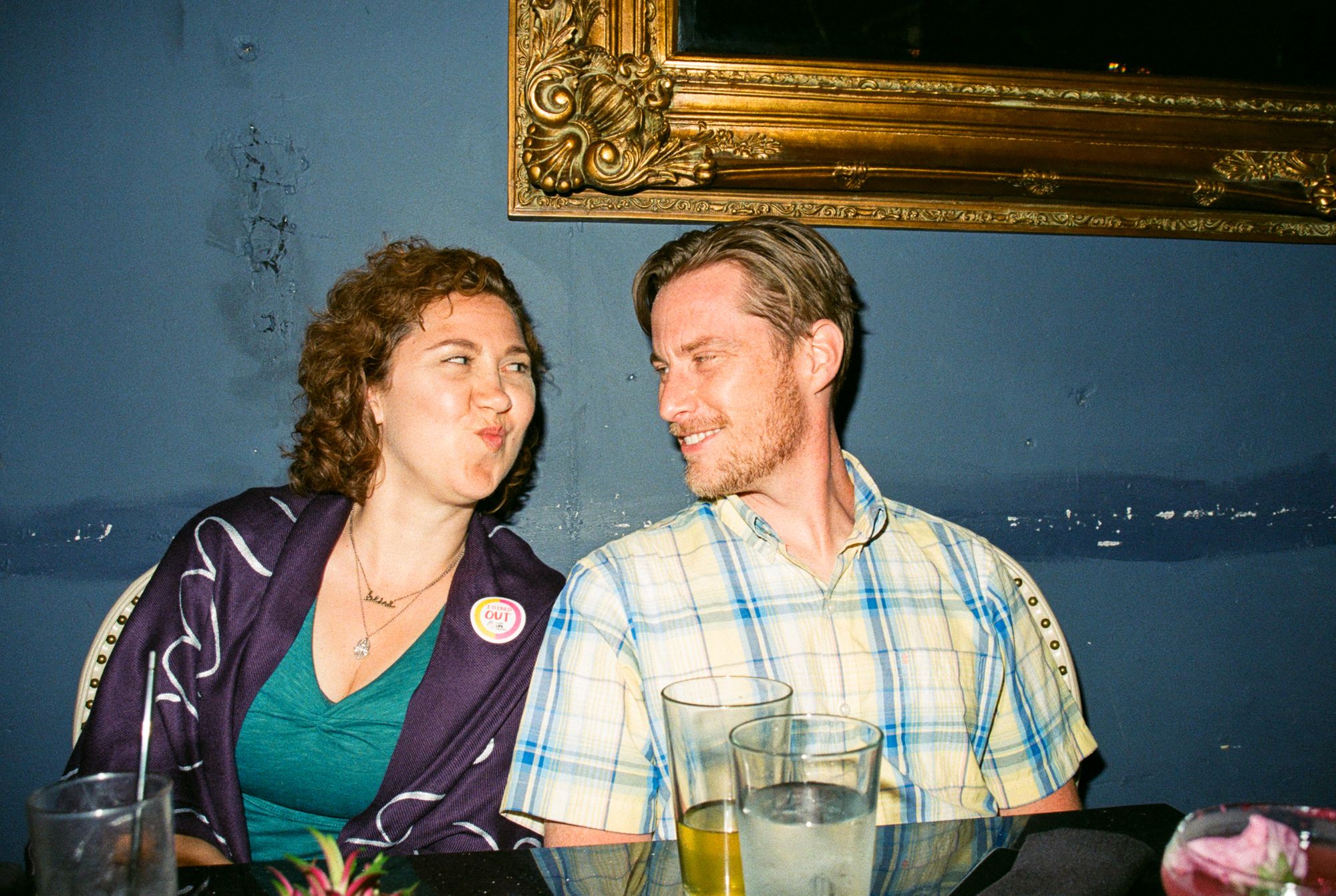
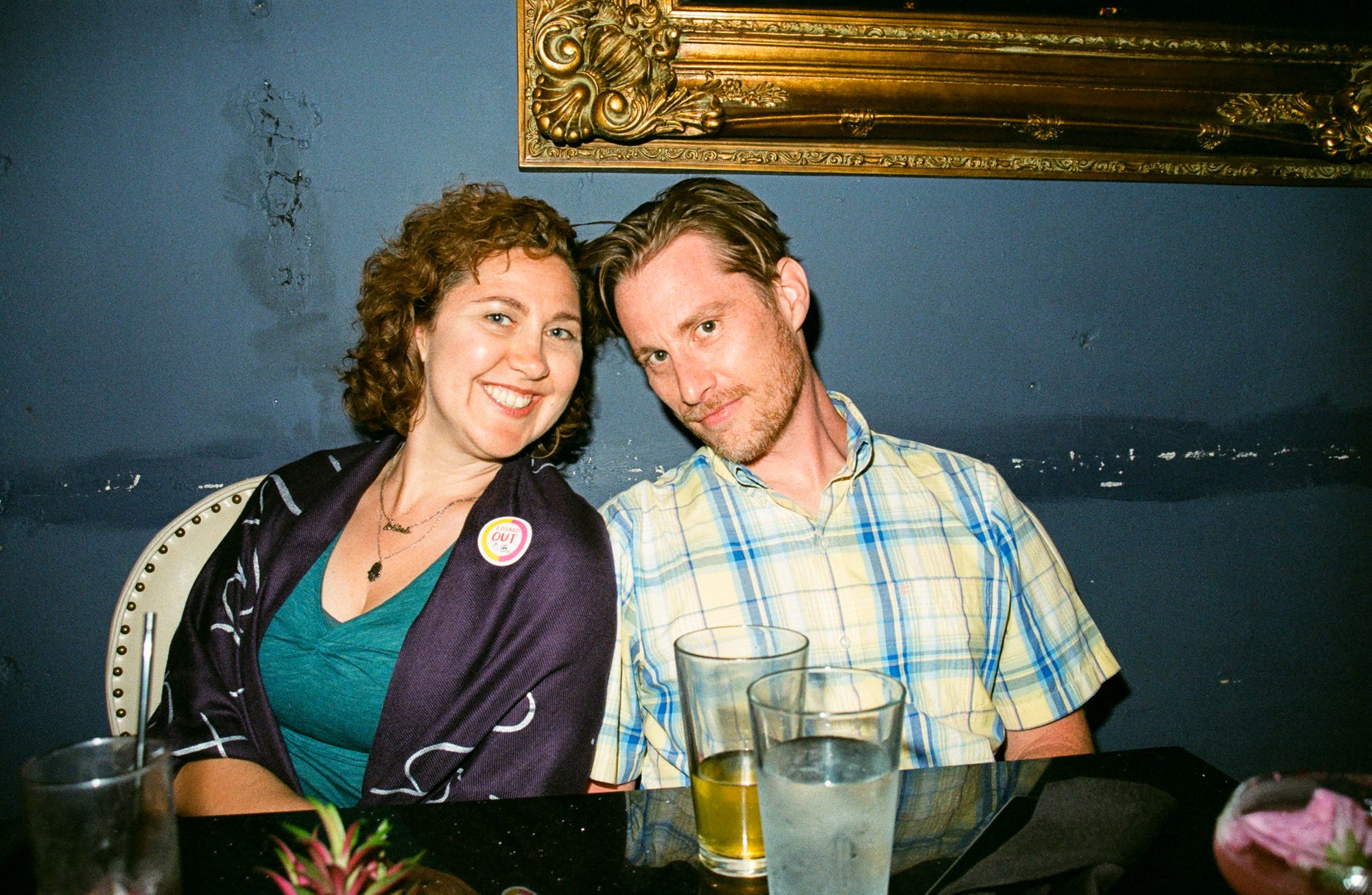
I cannot tell you how much time went into photographing these fine folks, or editing the images, or writing these words, but I can say that I have looked many times at the resulting set of images, and they’ve made me happy or brought me a sense of joy. These were some of the loveliest moments of the year, and I feel that when I look at the photos.
I am grateful for the generosity of all who agreed to be photographed, which was almost everyone. Not a single person in the restaurant/hospitality field declined. However, one dining companion did not wish to be photographed, and another I chose not to photograph because I didn’t believe I would be able to do so within the parameters of the project and achieve a pleasing image.
One bonus of this project is that I temporarily became significantly more outgoing than I typically am as relates to issuing invitations. So, literally because of this project, I dined with some folks with whom I otherwise almost certainly wouldn’t have had an opportunity to share a meal.
And with that, I want to say thank you to the folks who said yes to an invitation I extended to dine with me, thank you to those who issued me an invitation to dine with them, and an extra-special thanks goes to those who both said yes to an invitation and also extended one to me.
And thank you all so very much for dining with me. I appreciate the company.
(Images presented in order of capture.)

